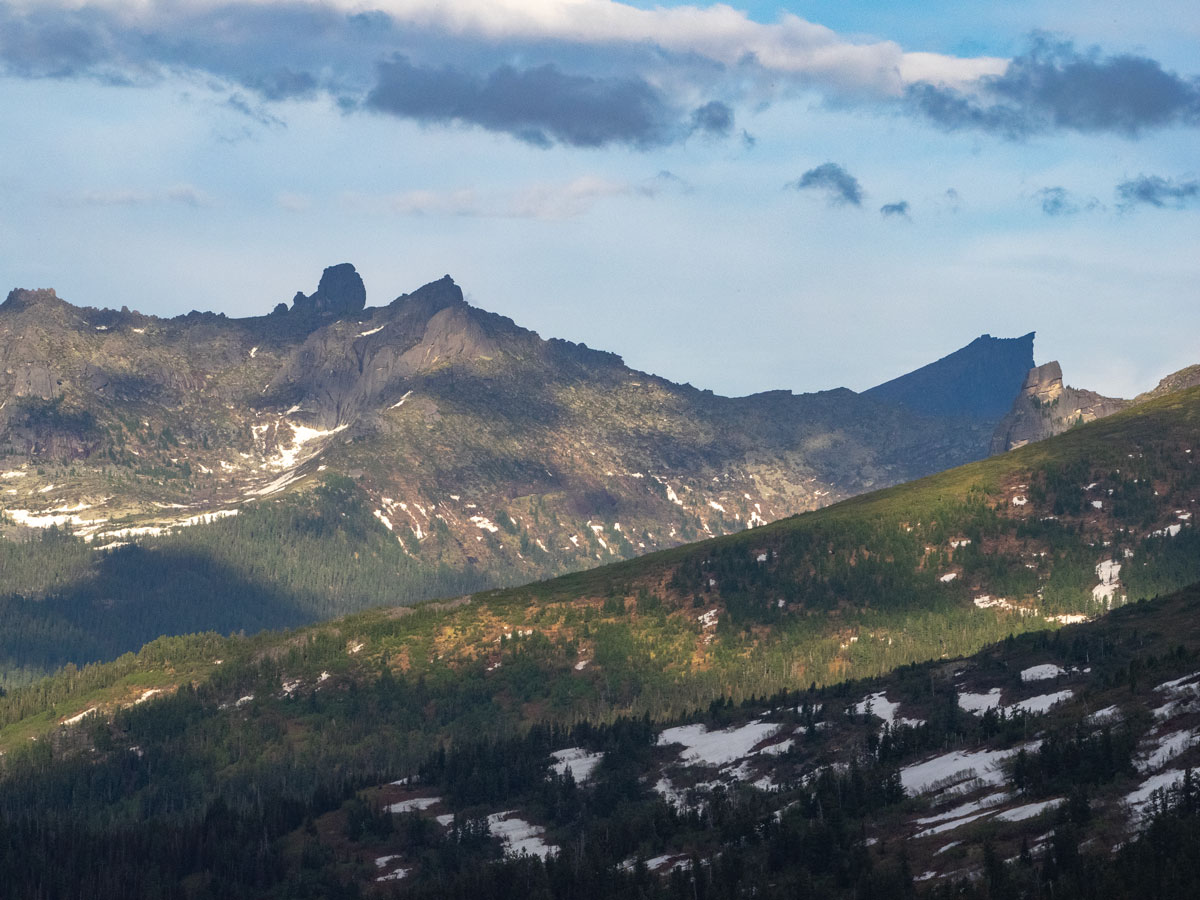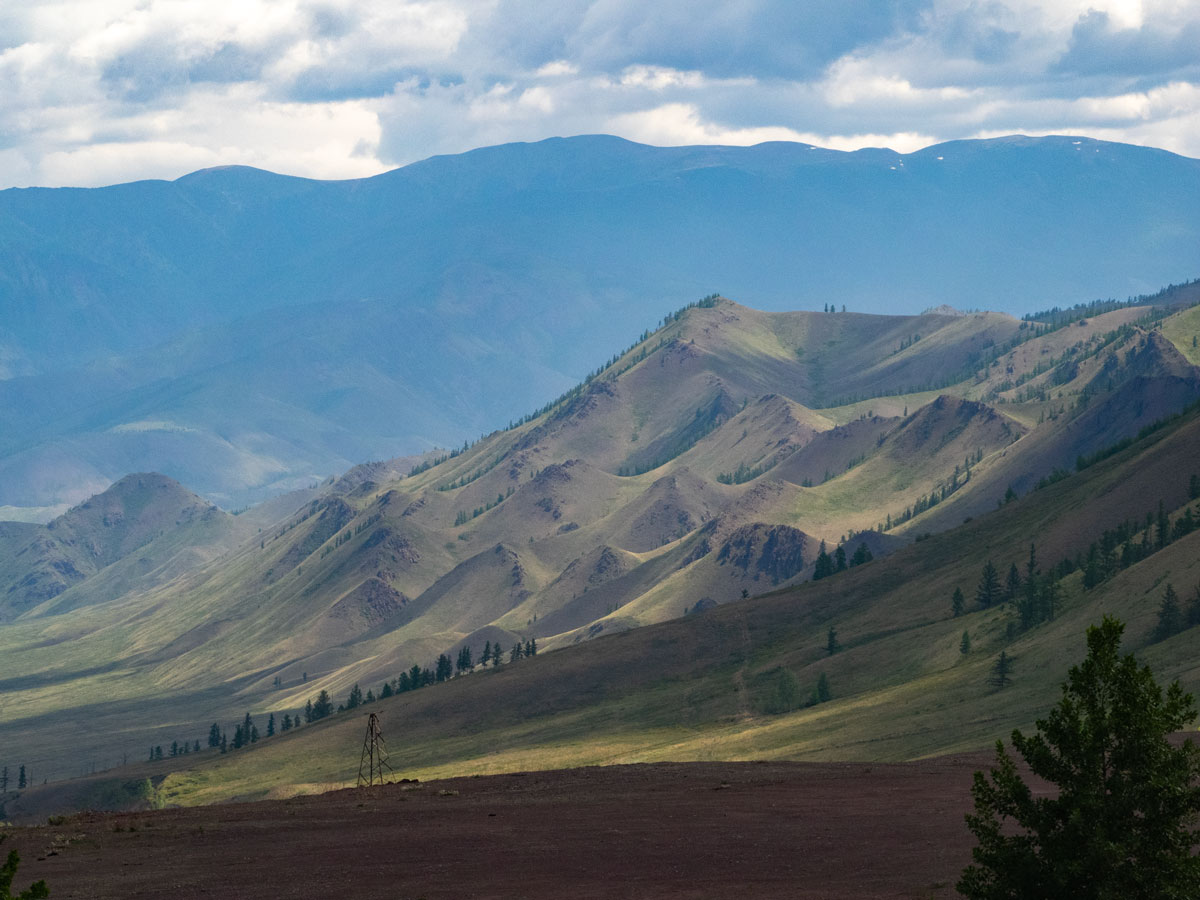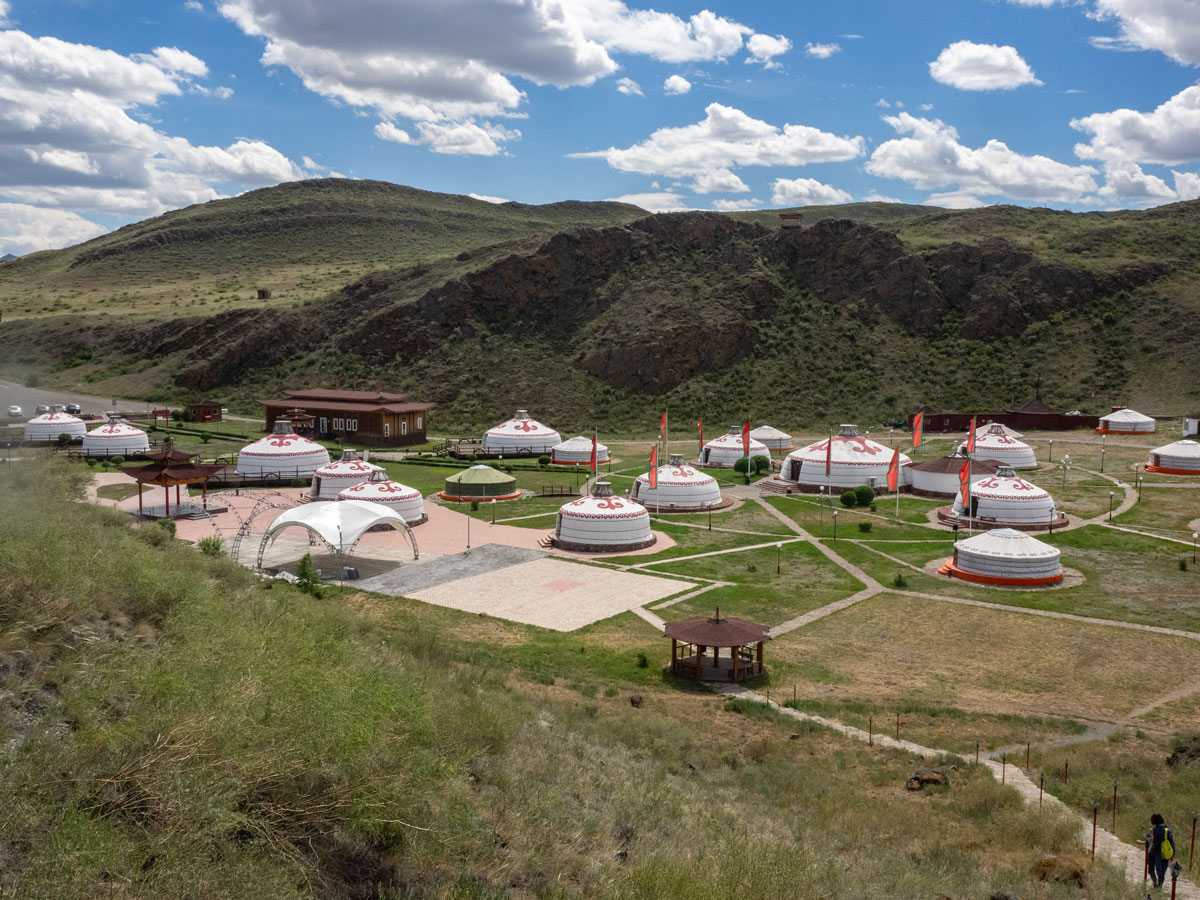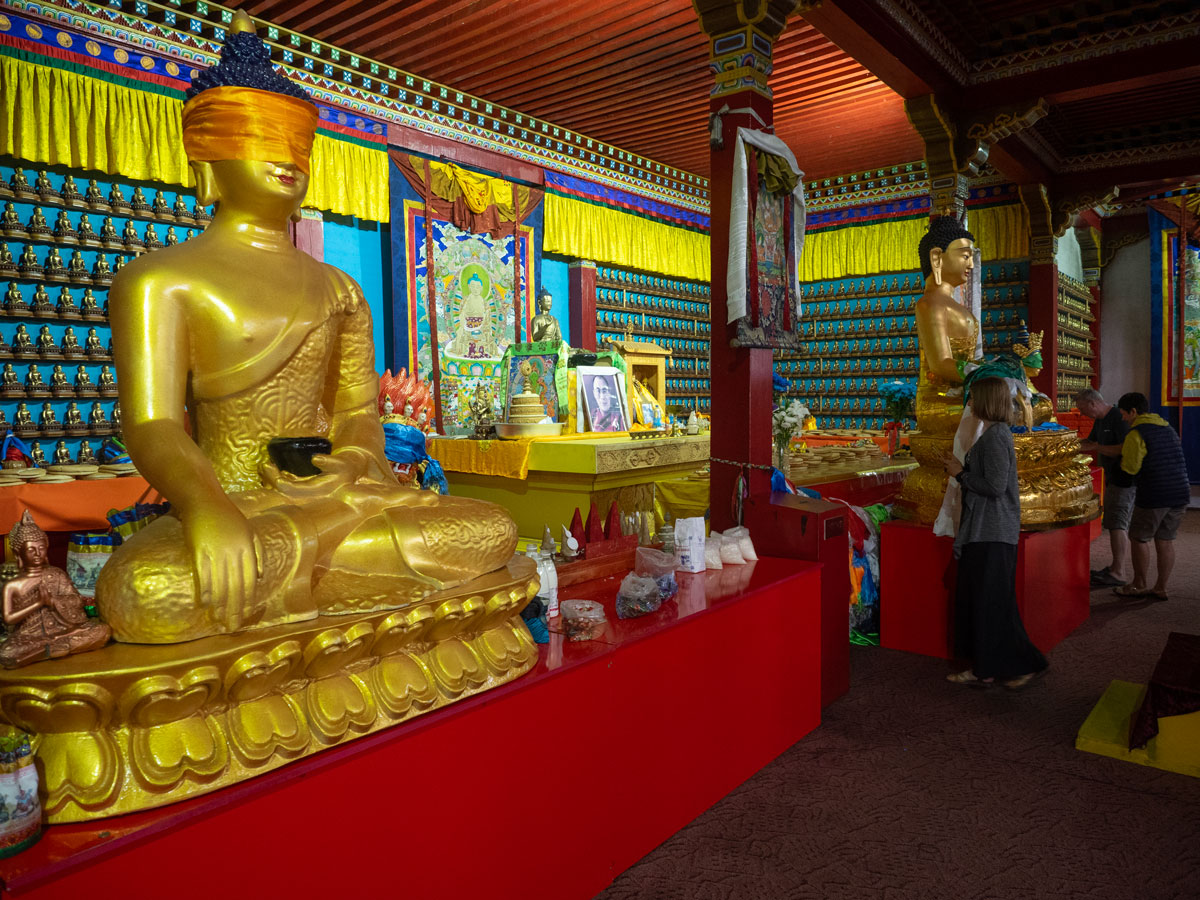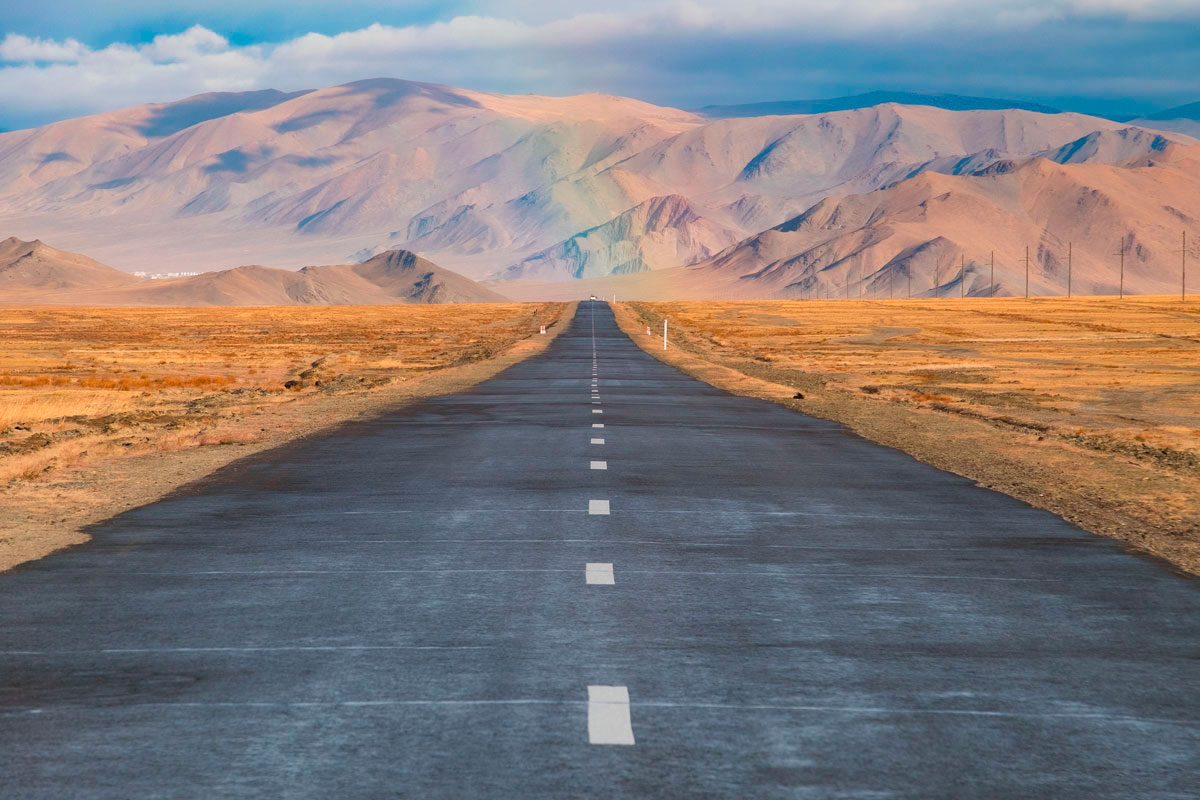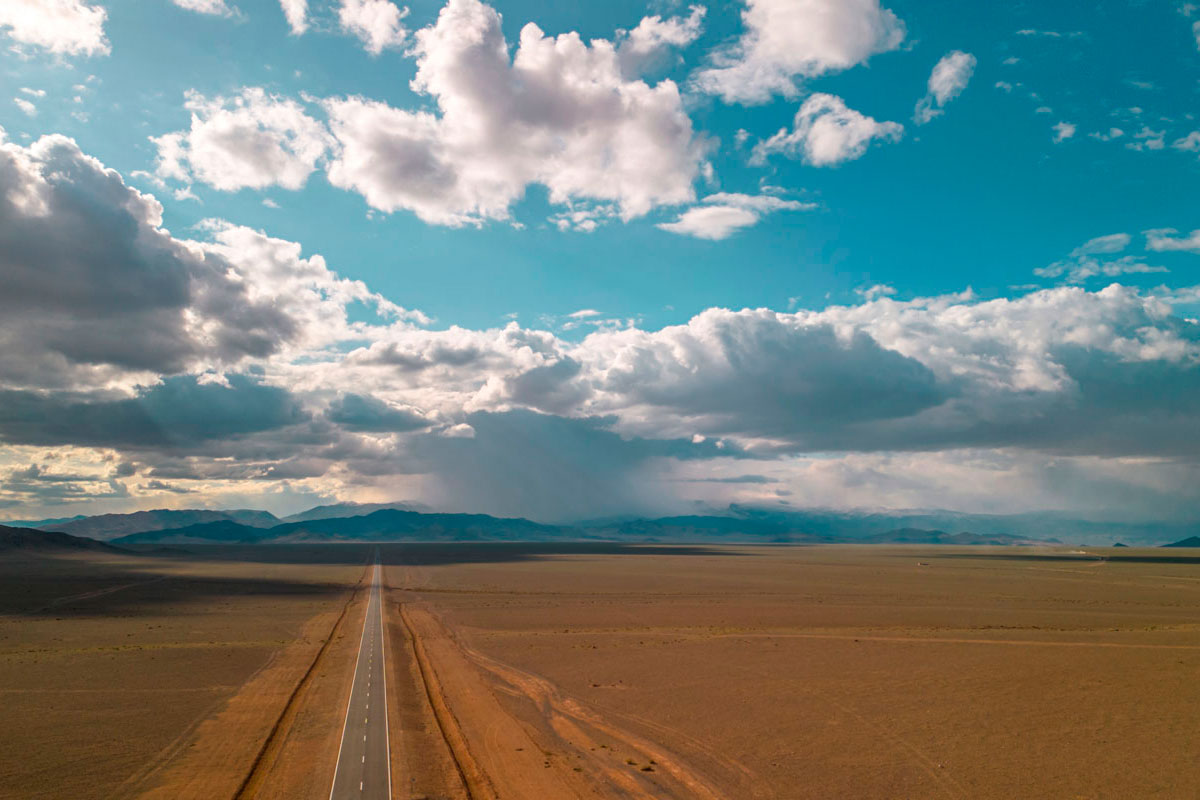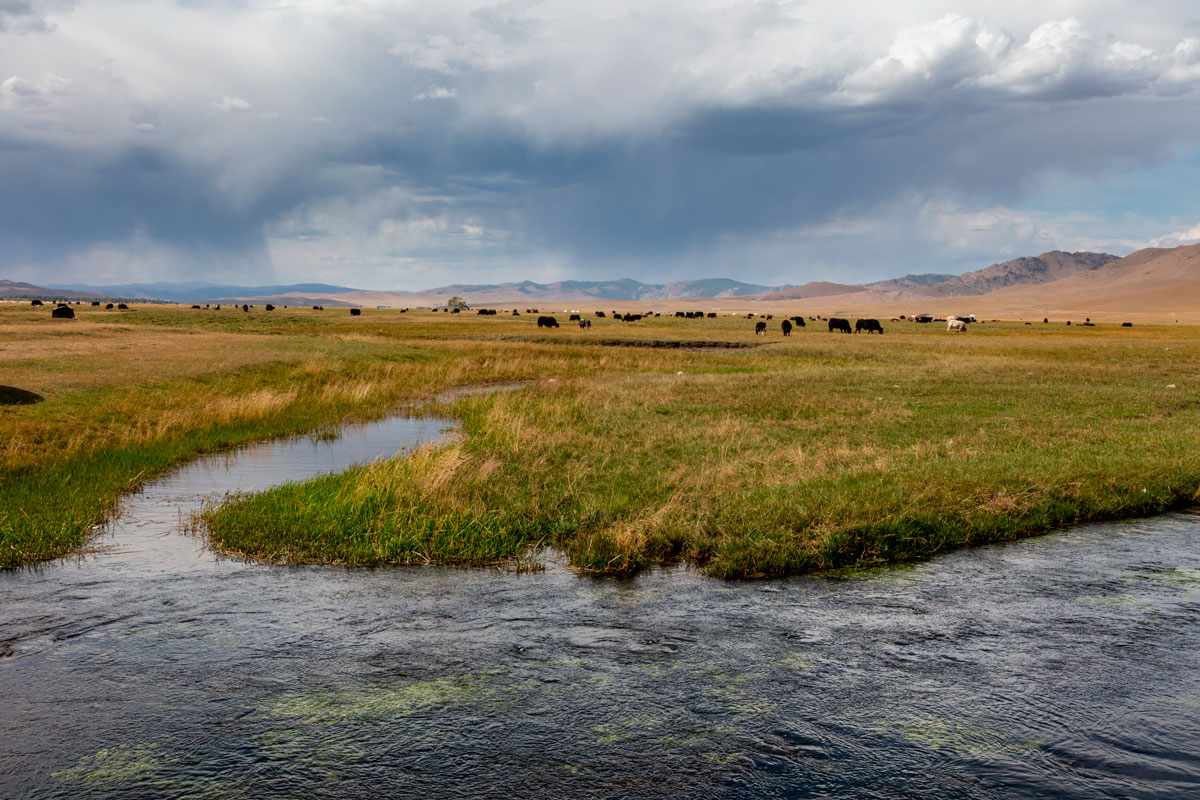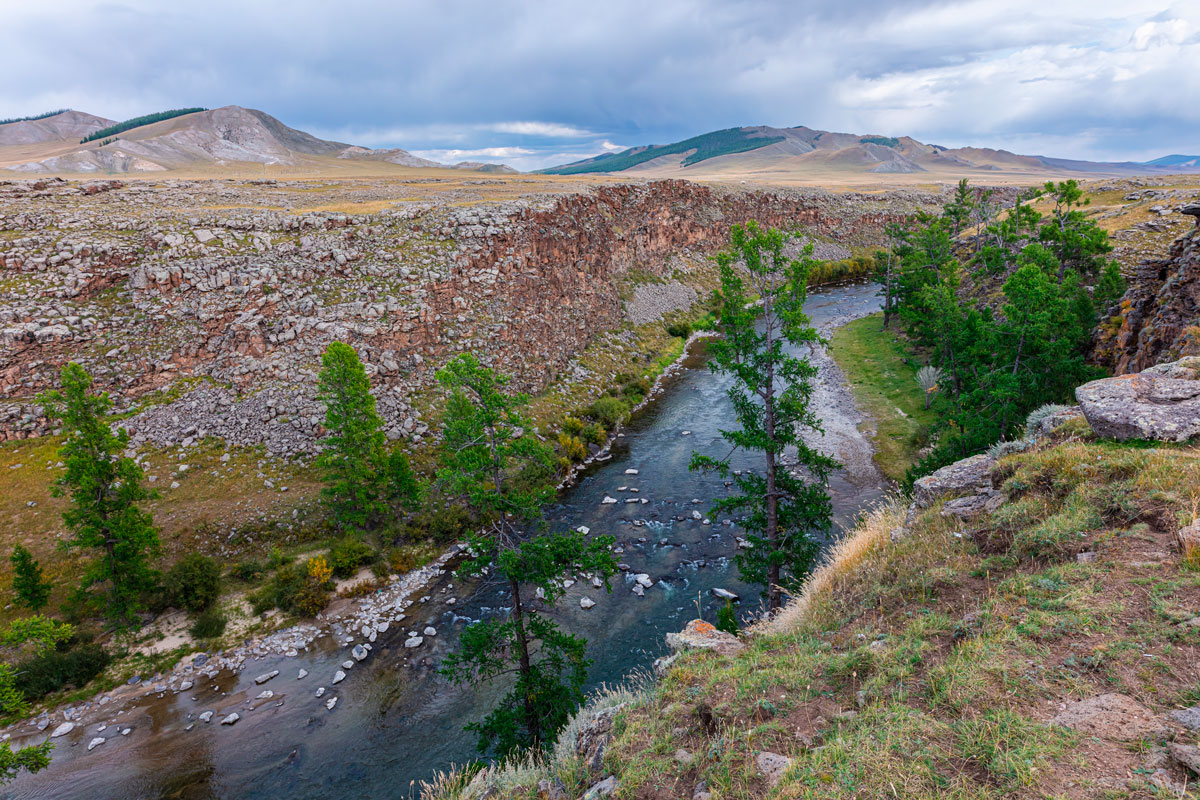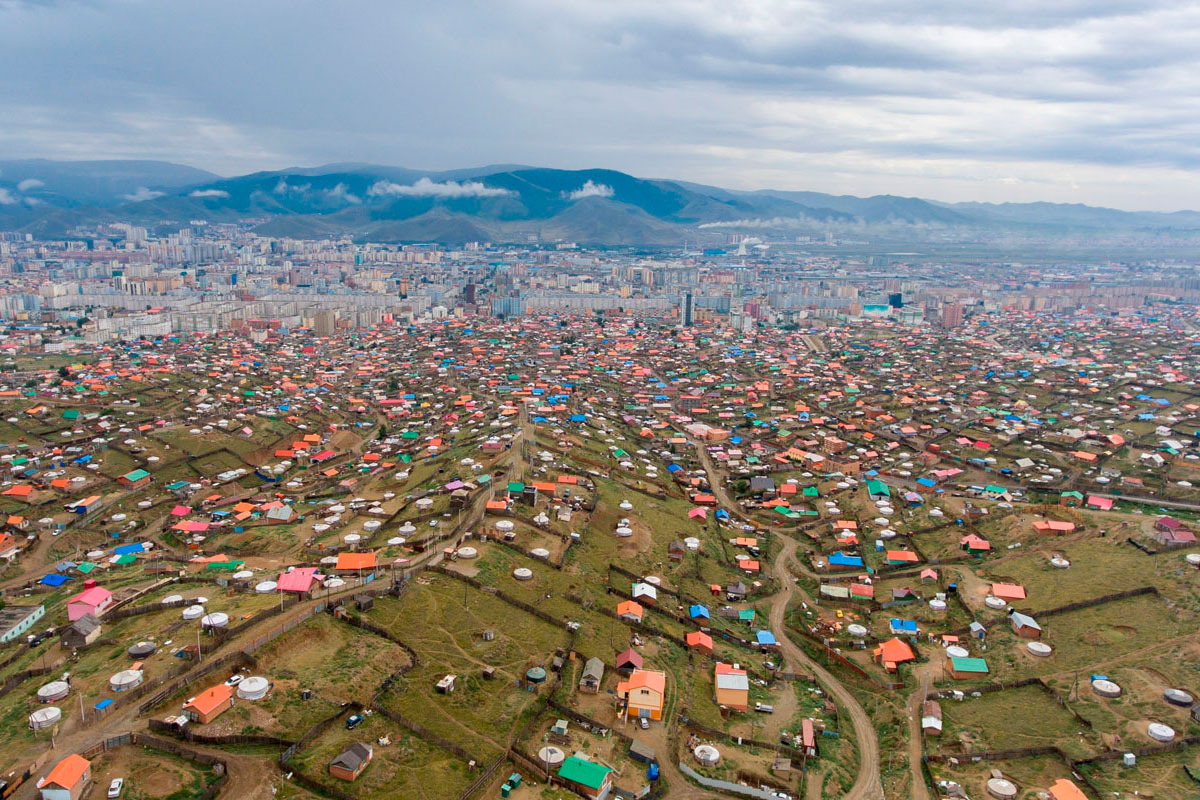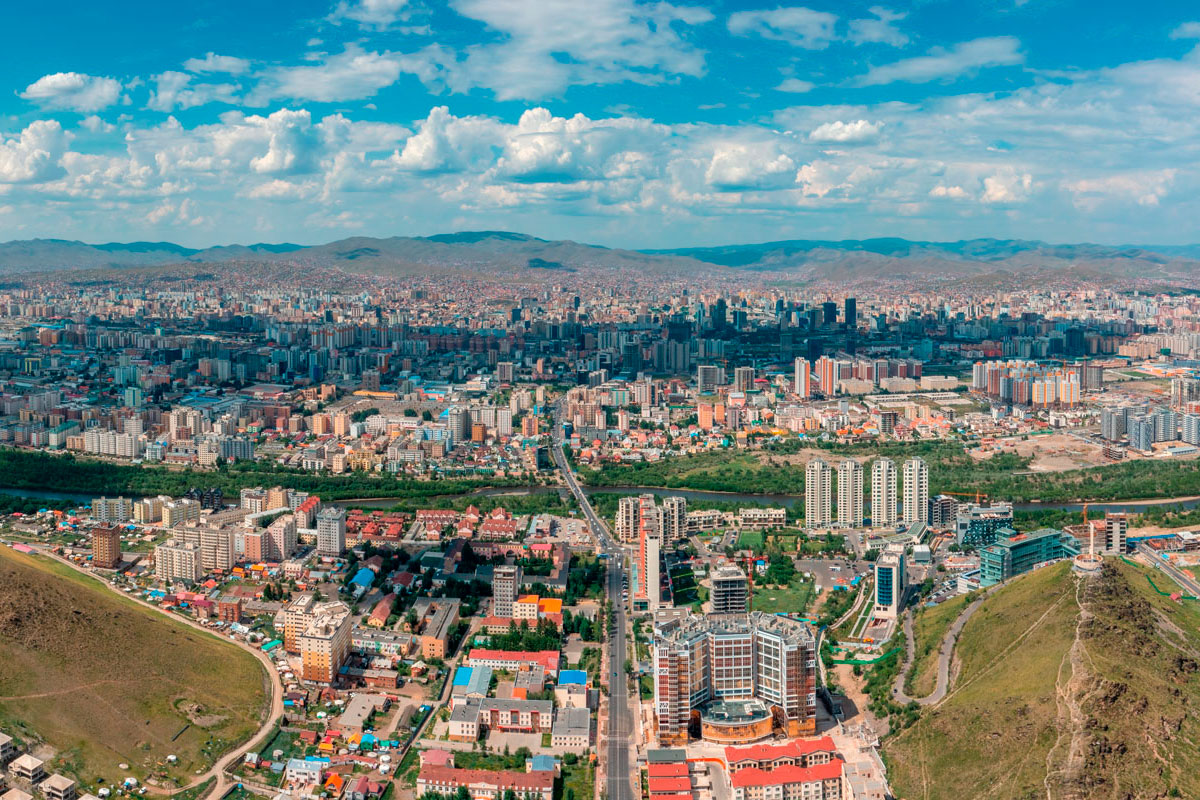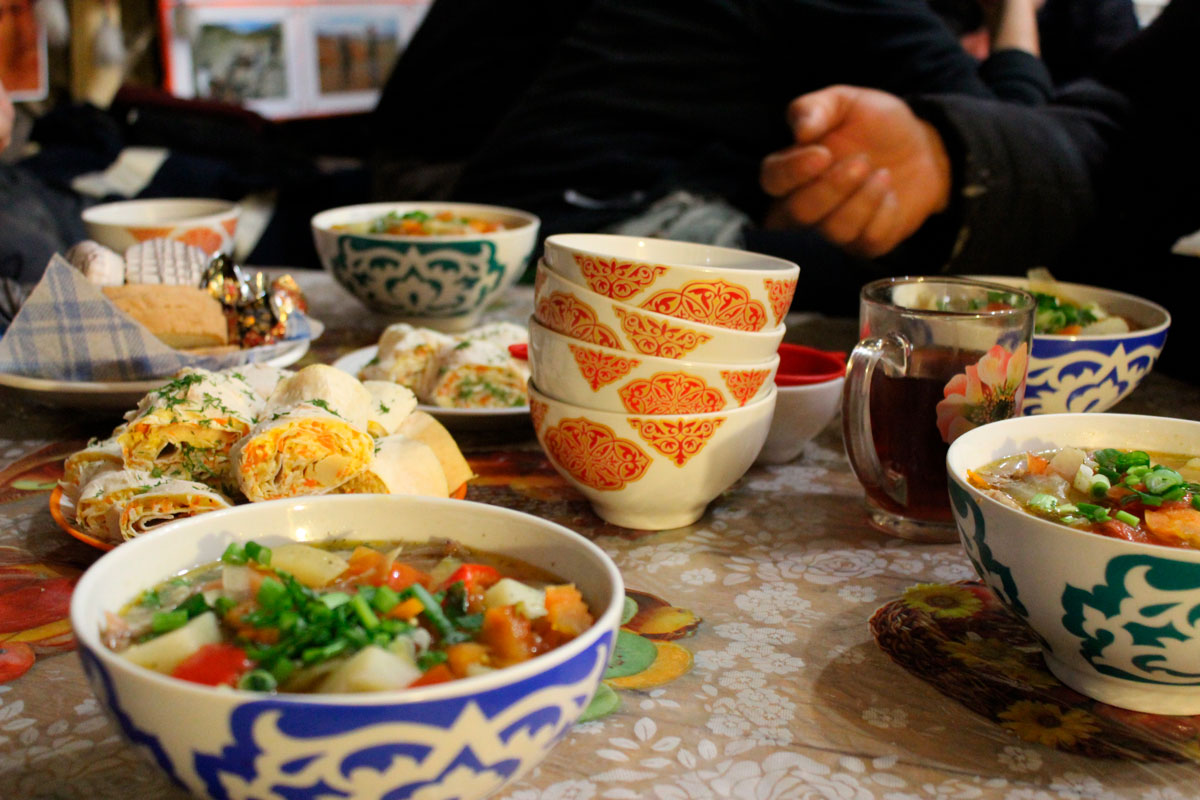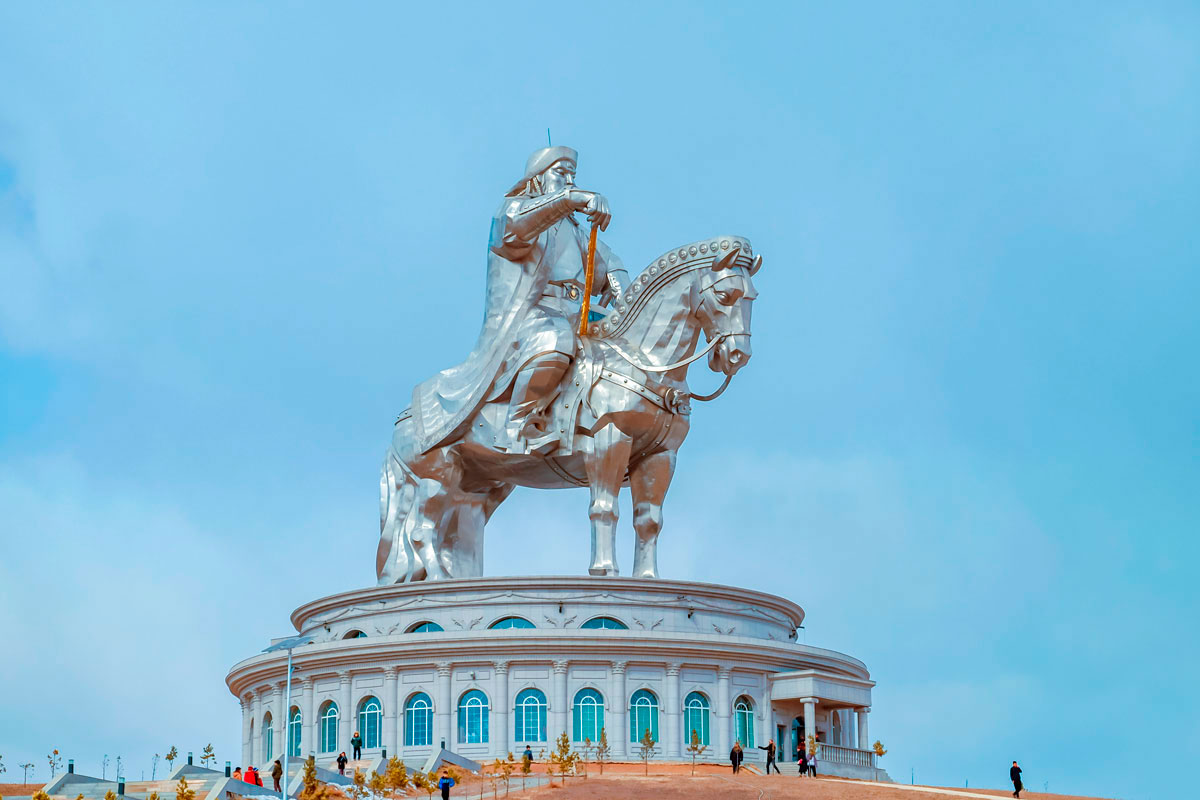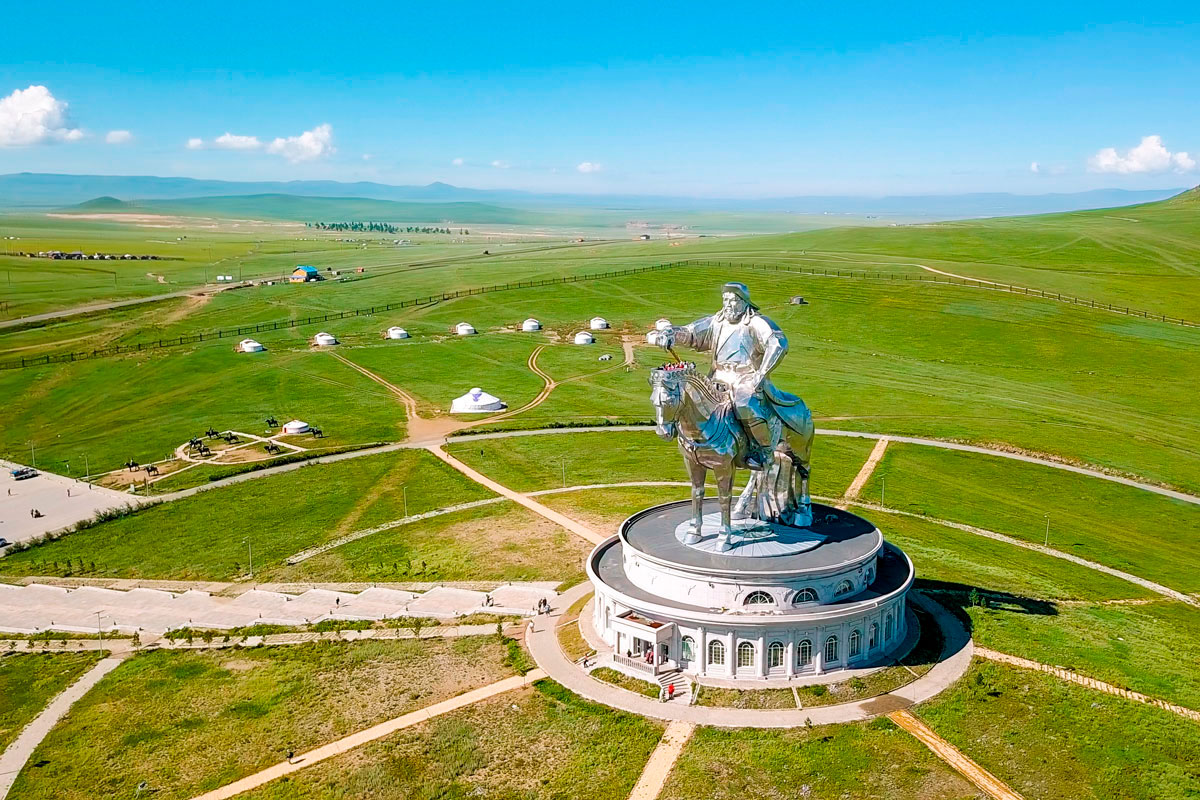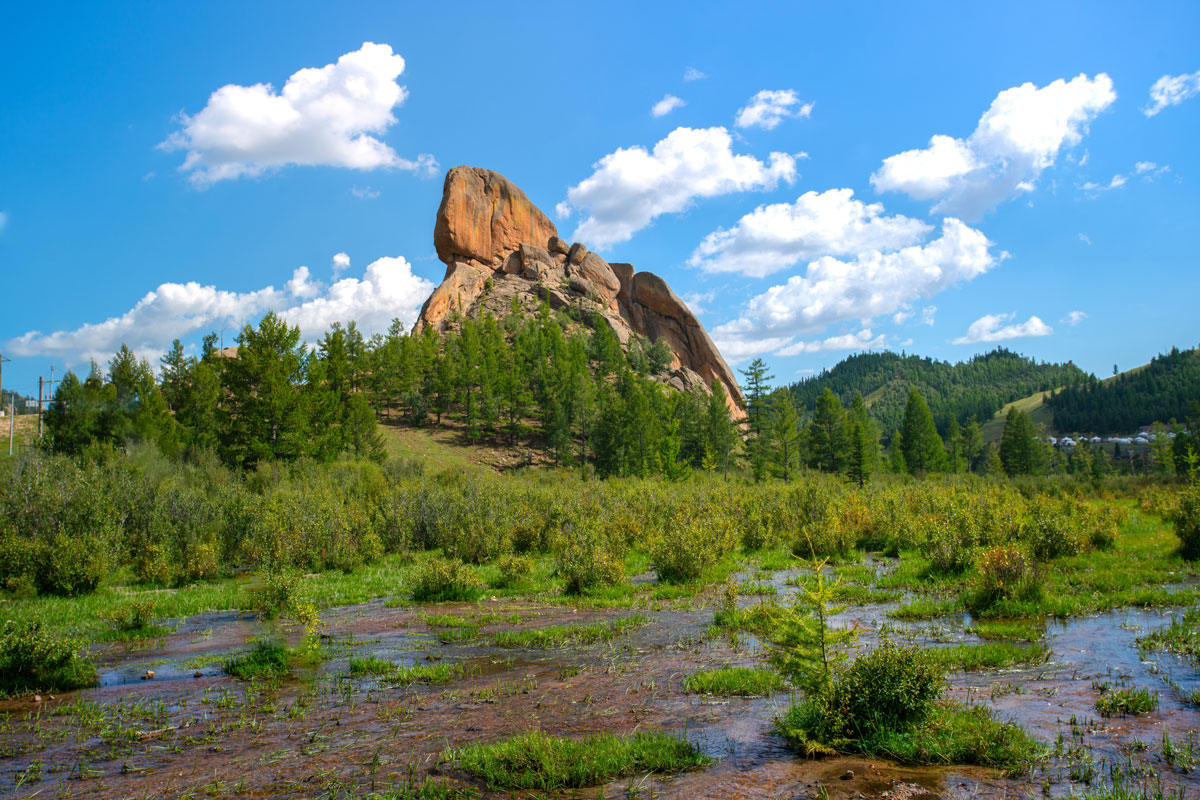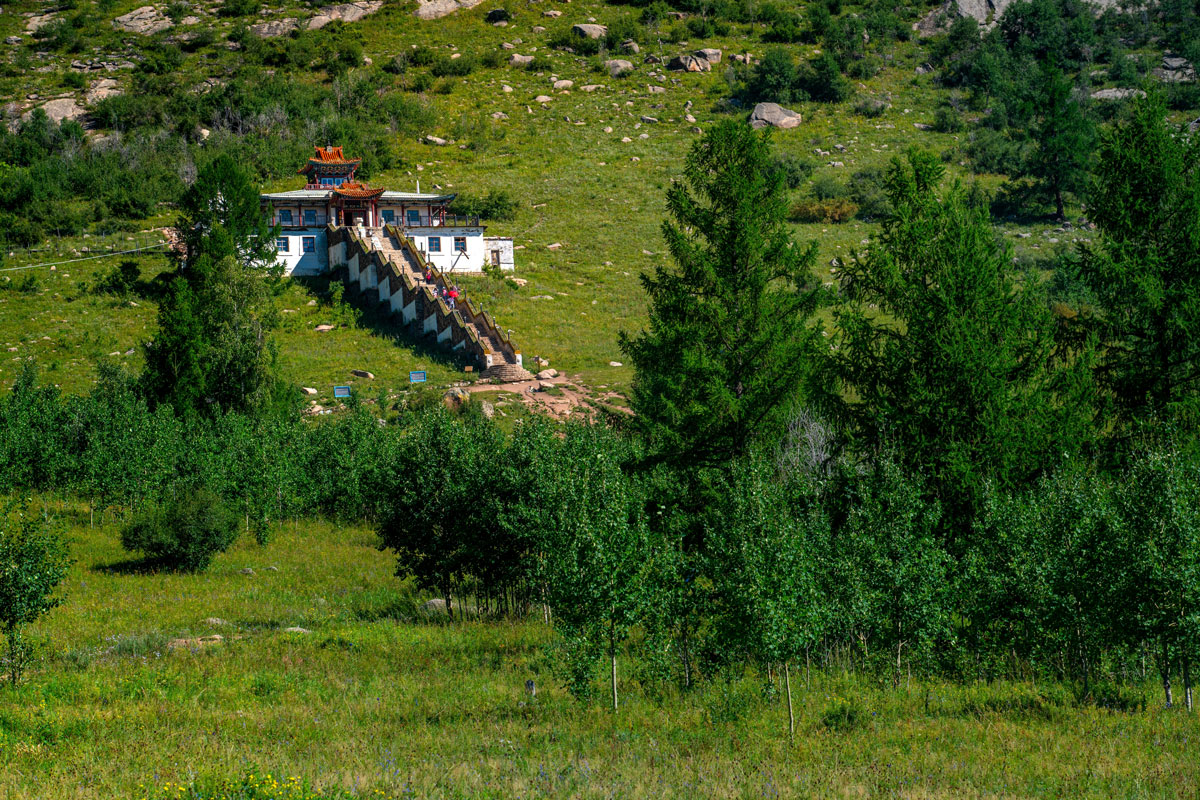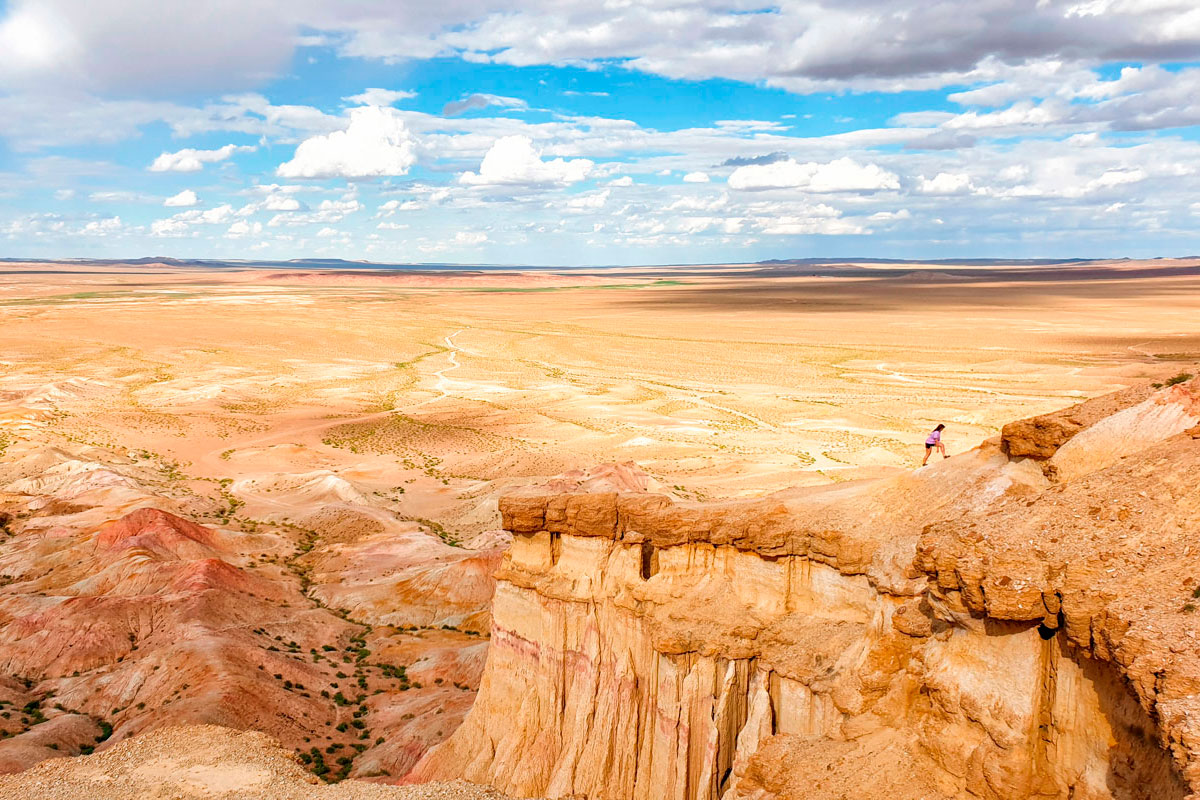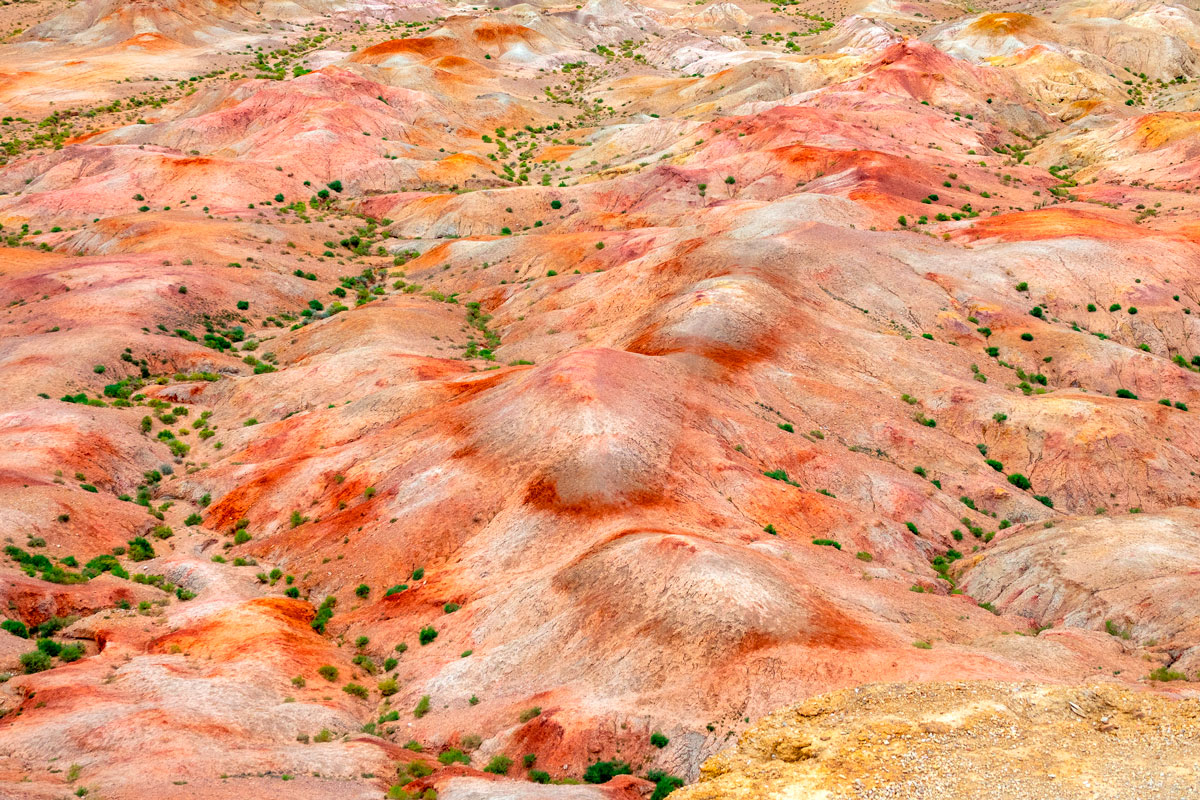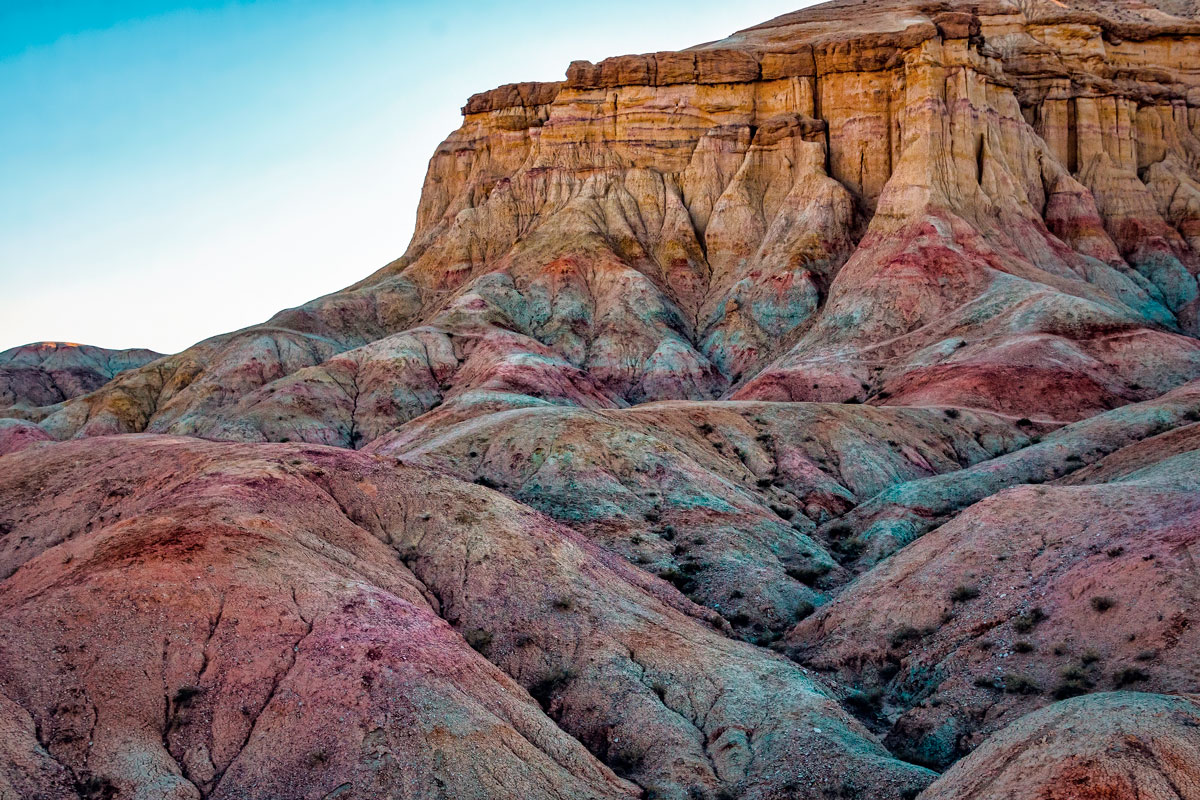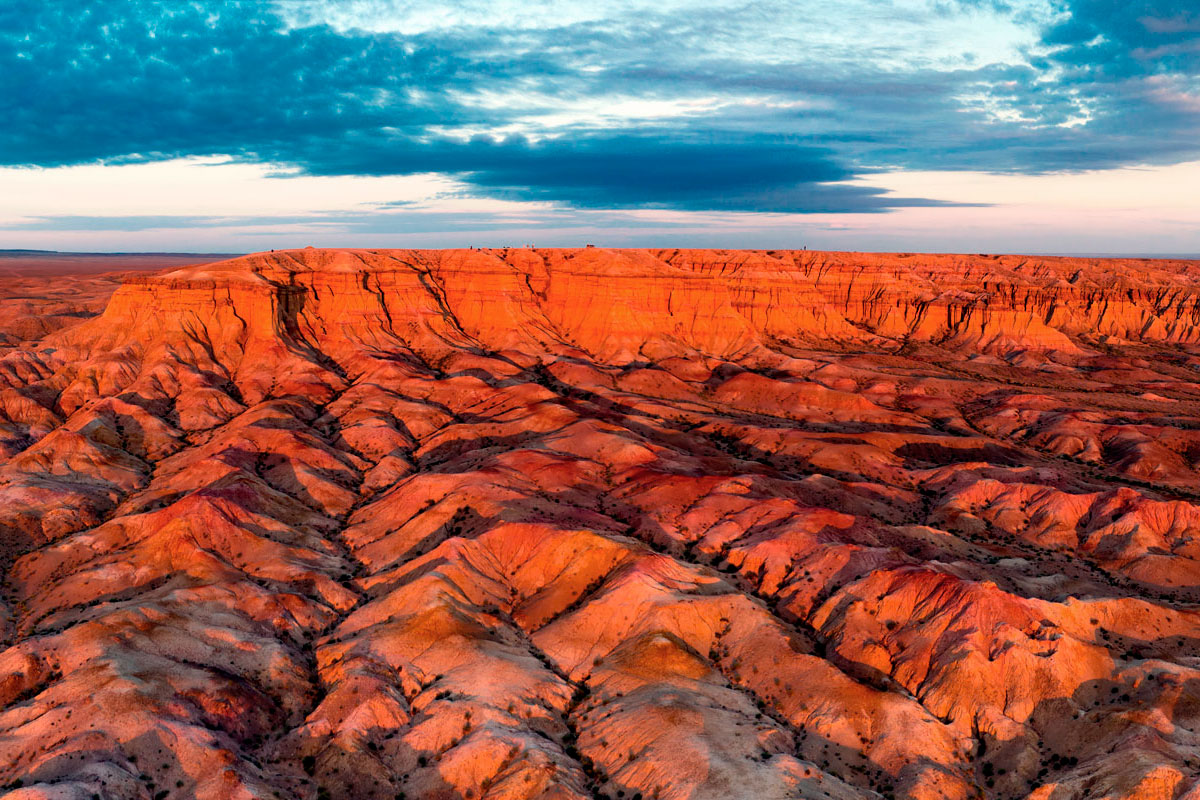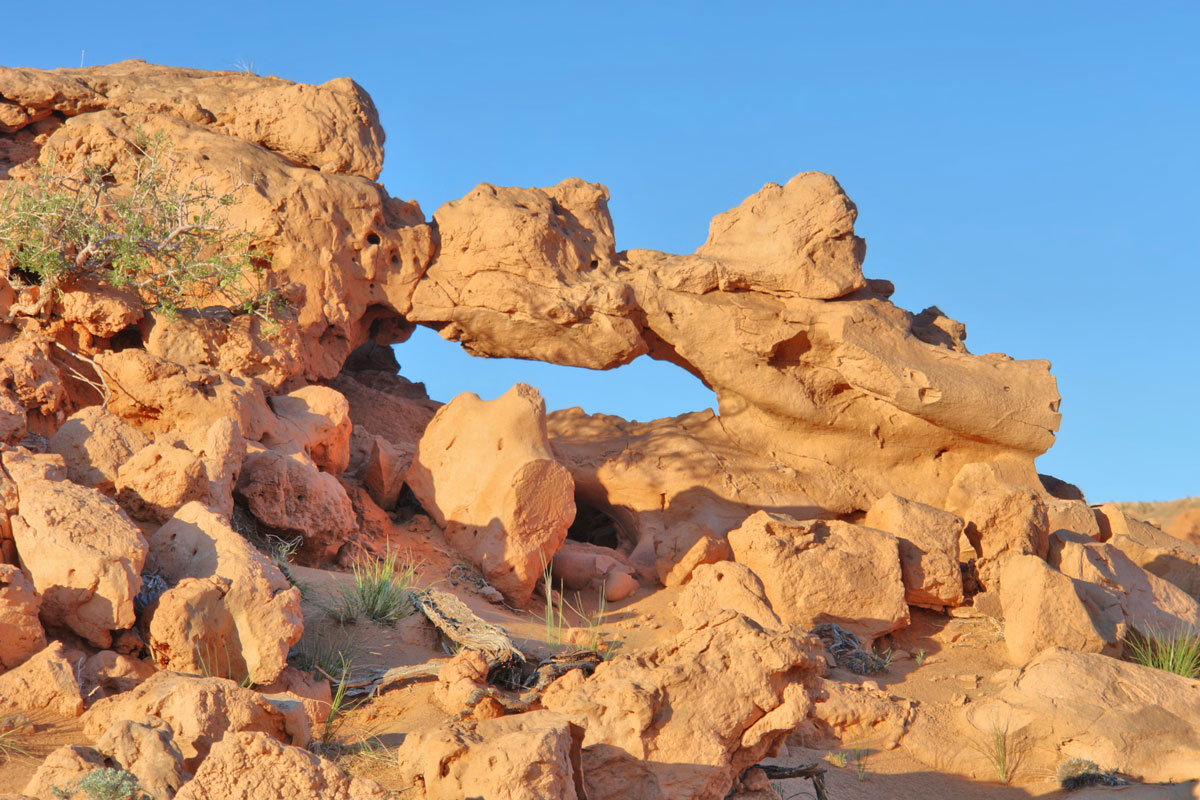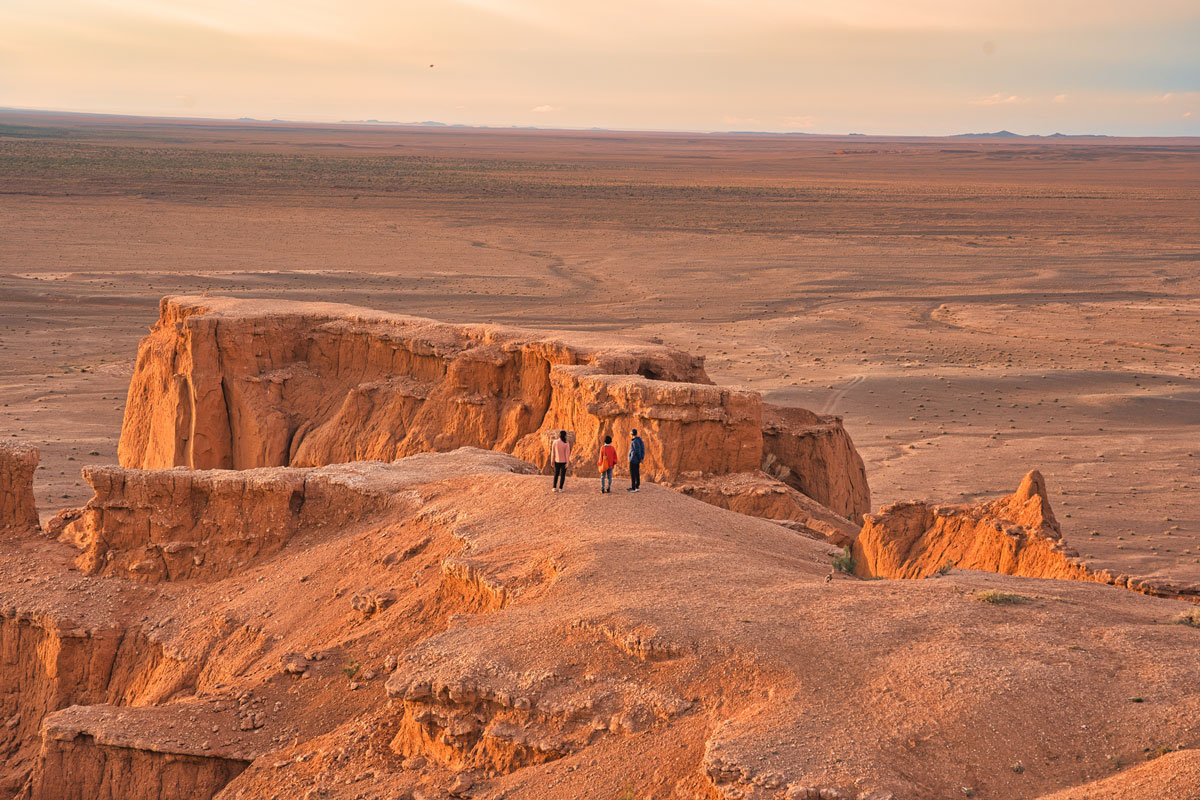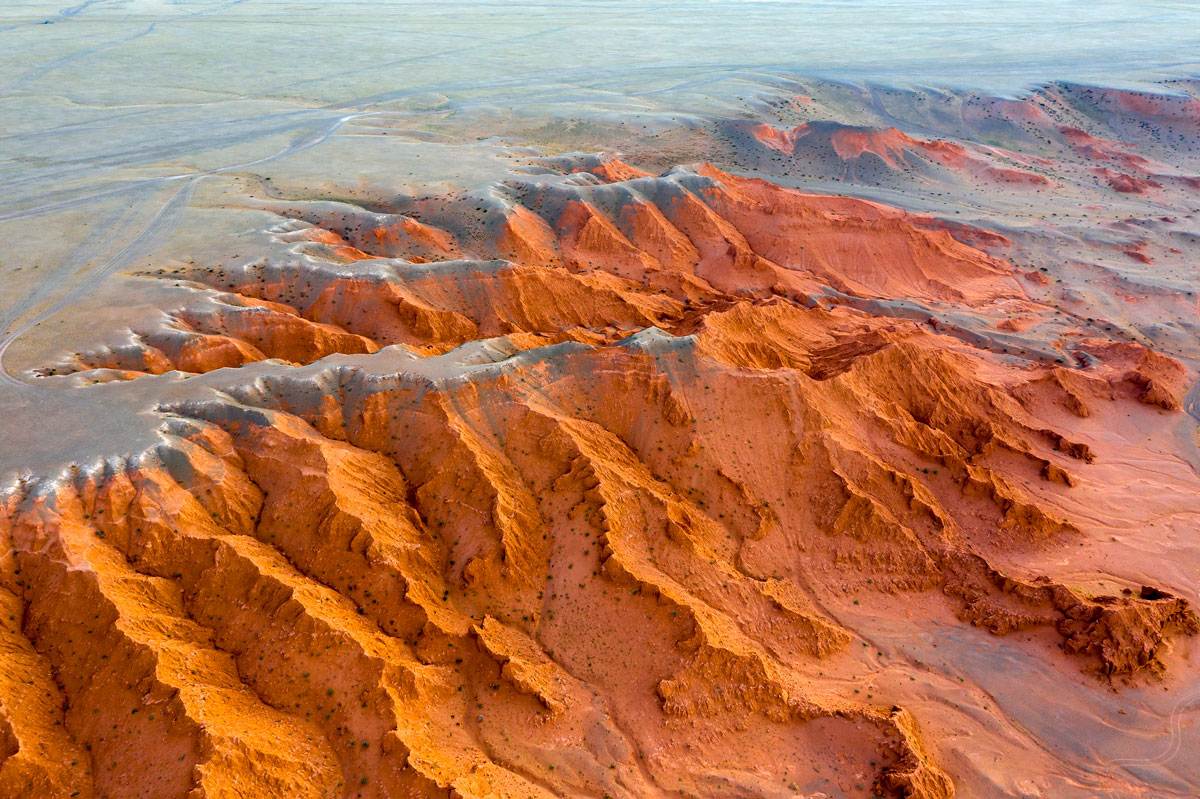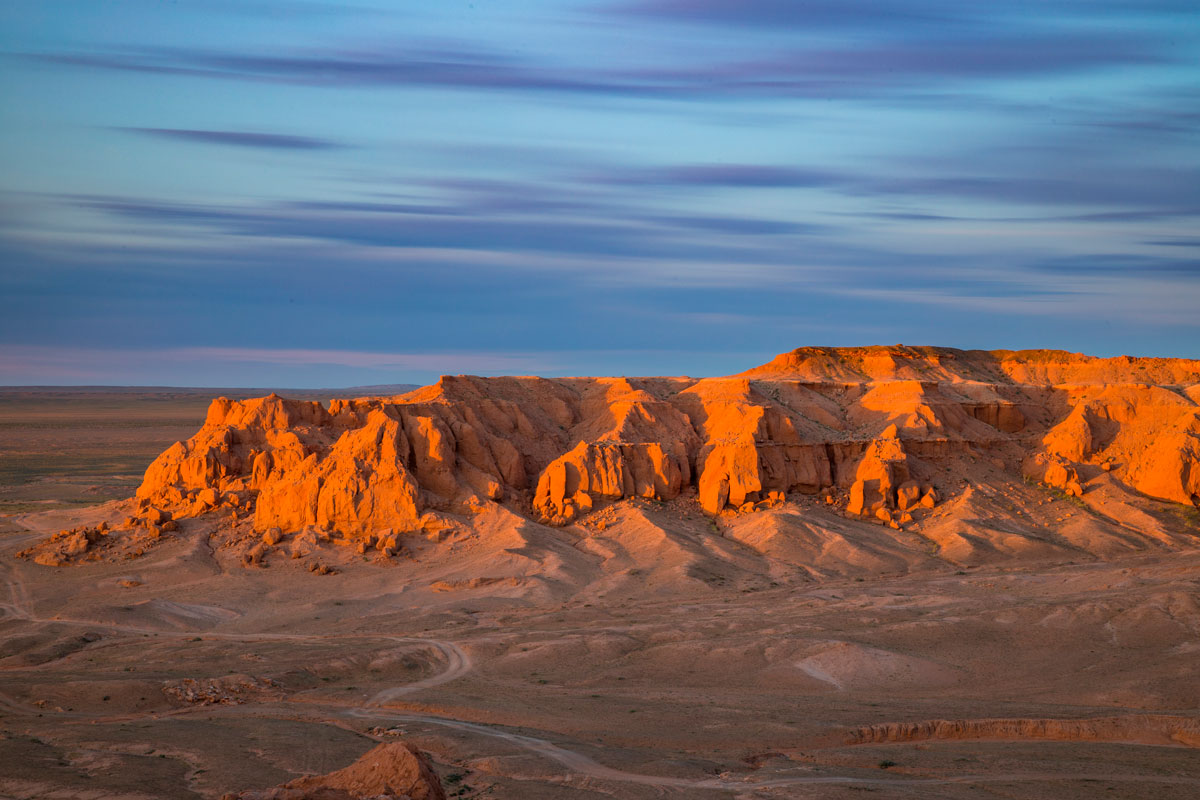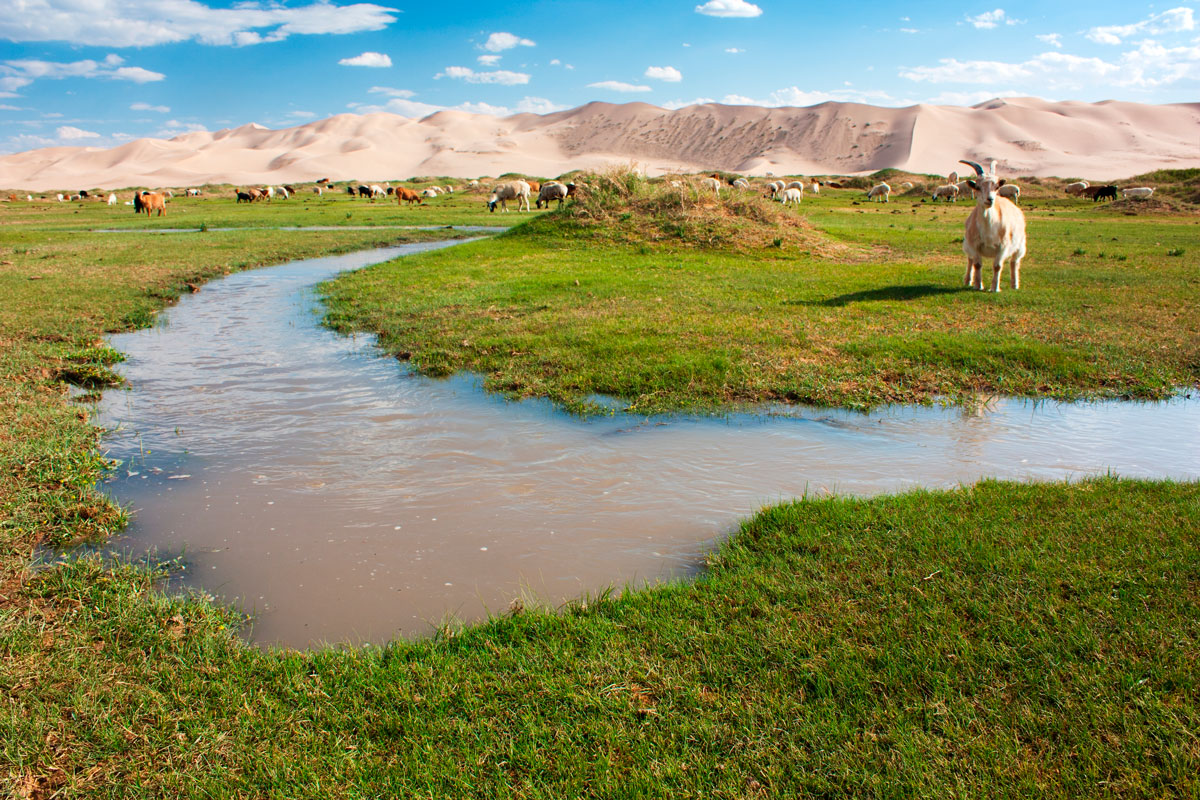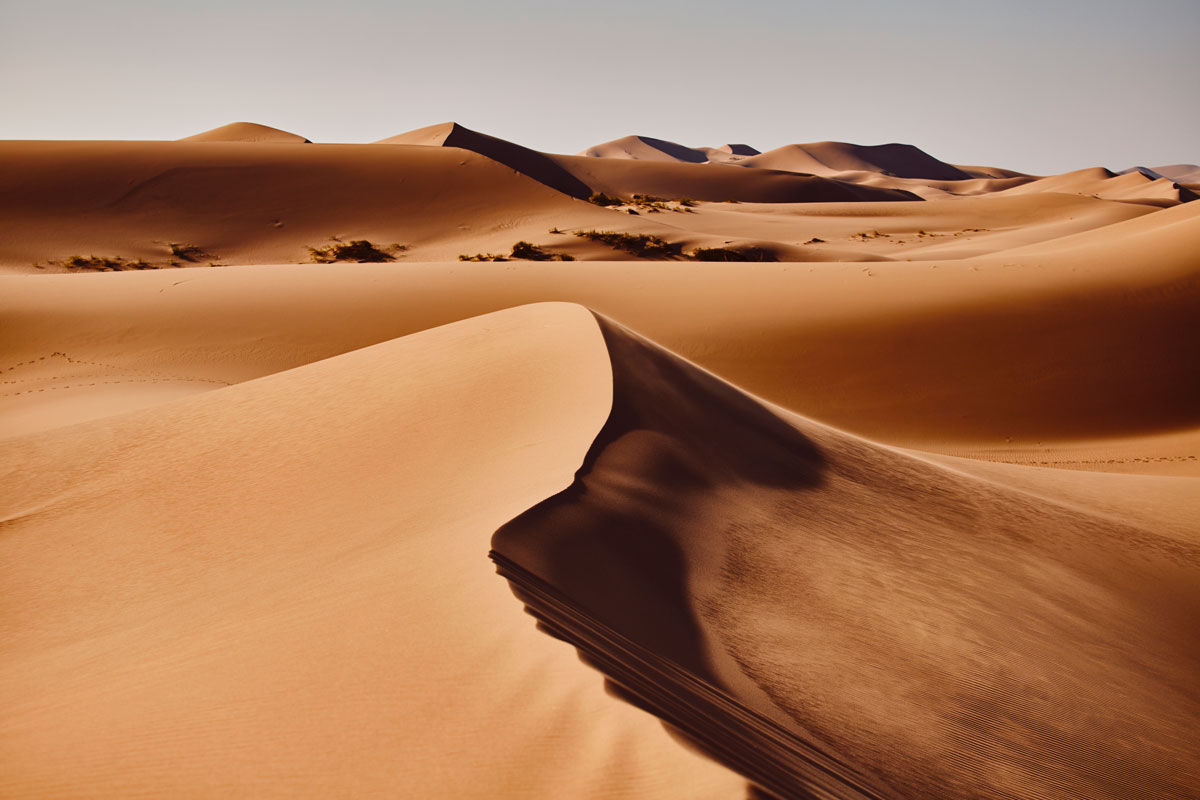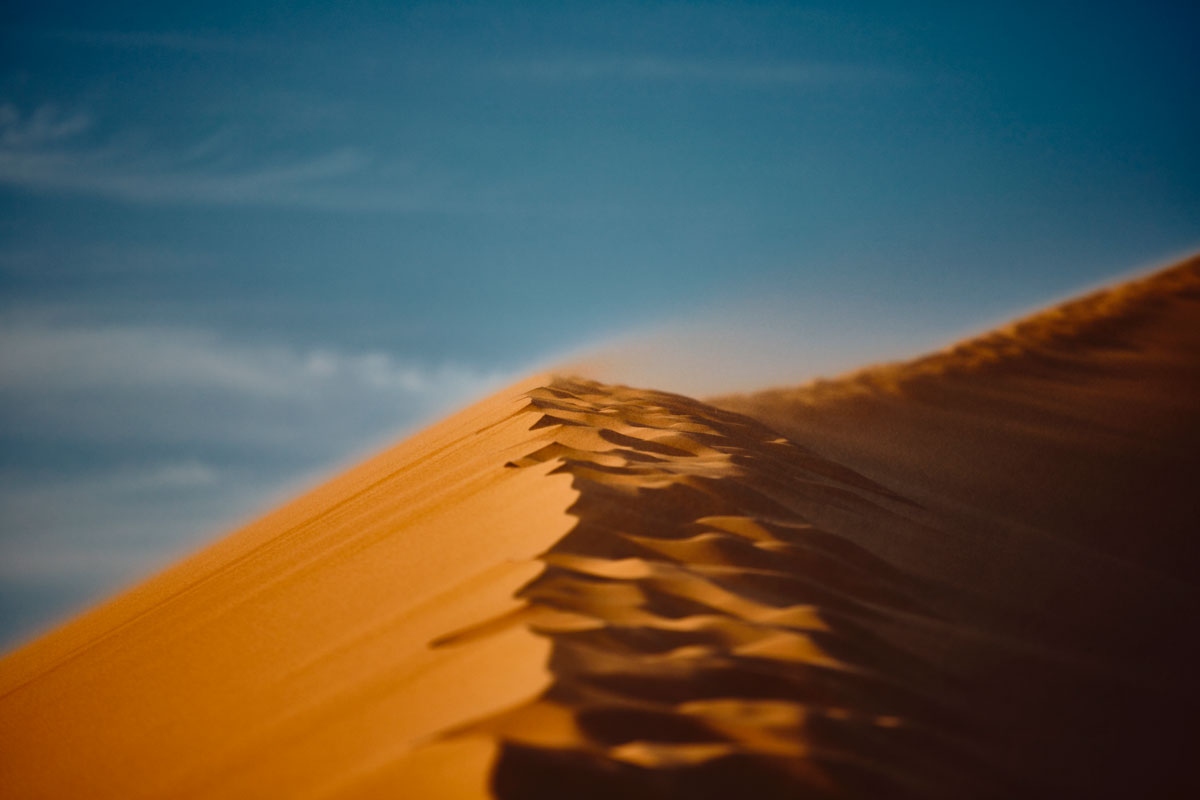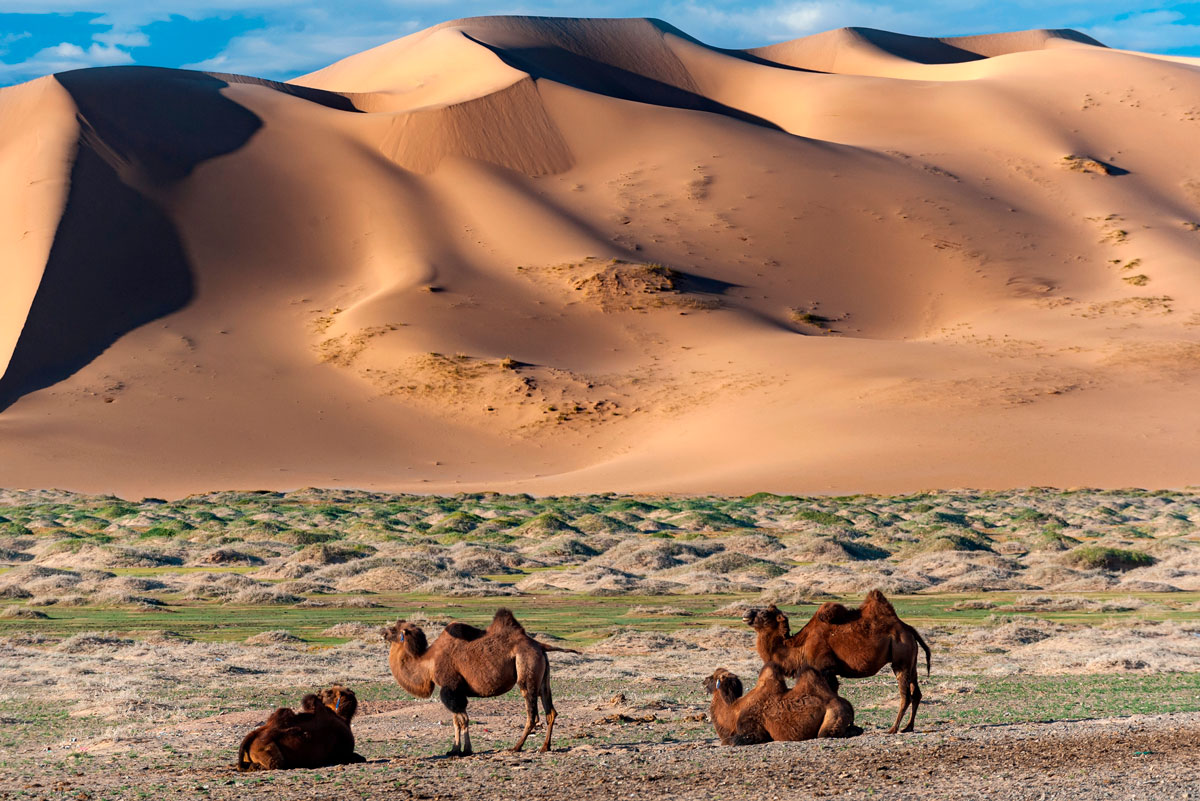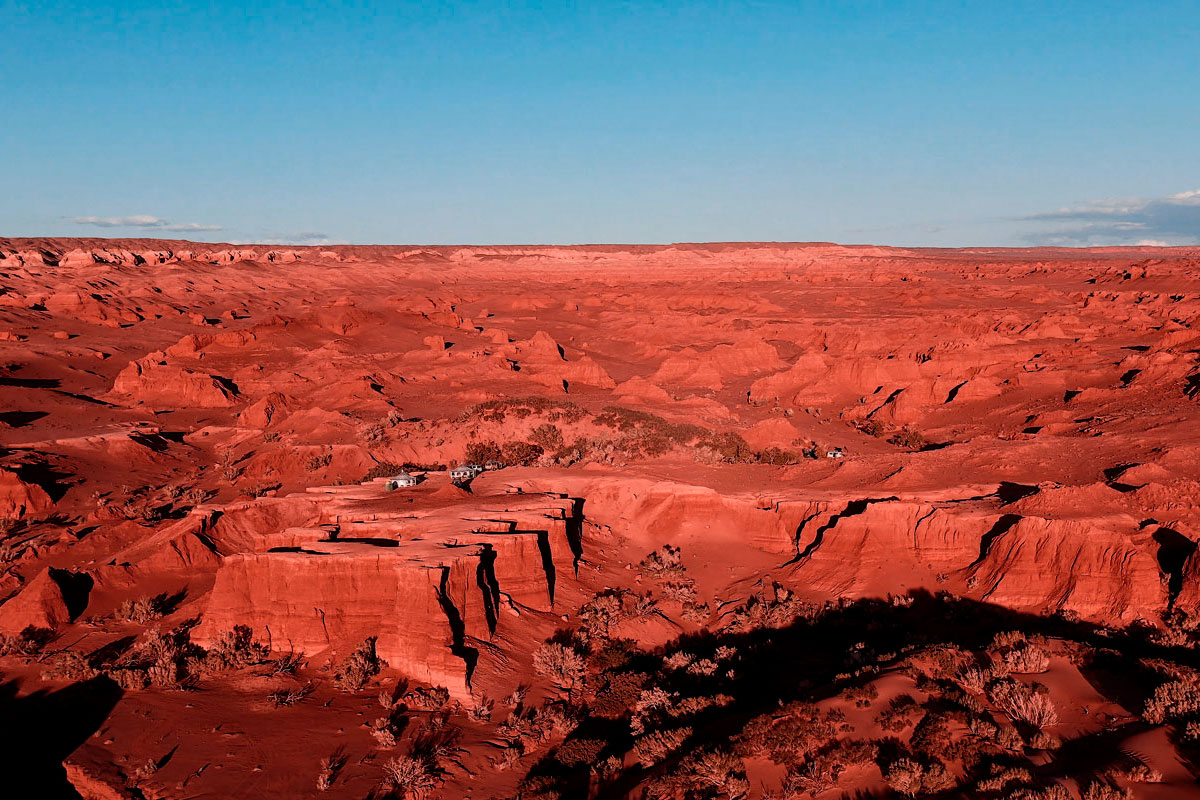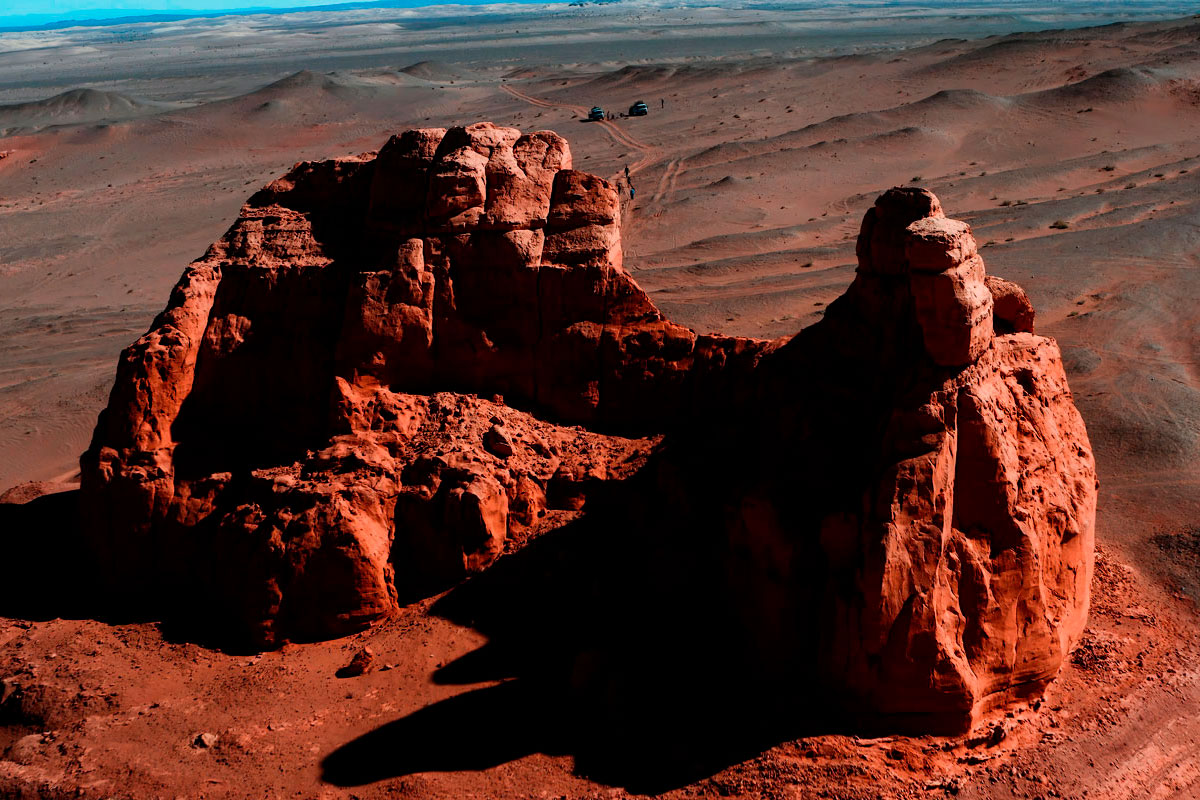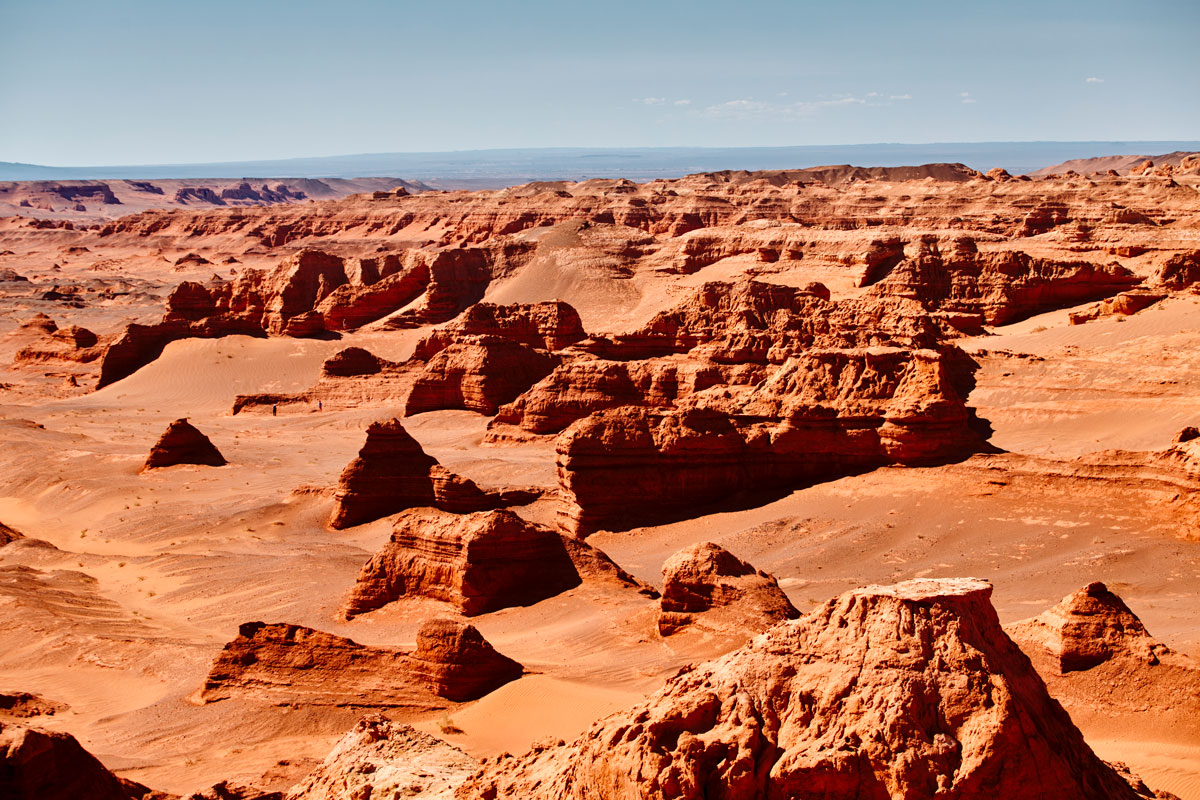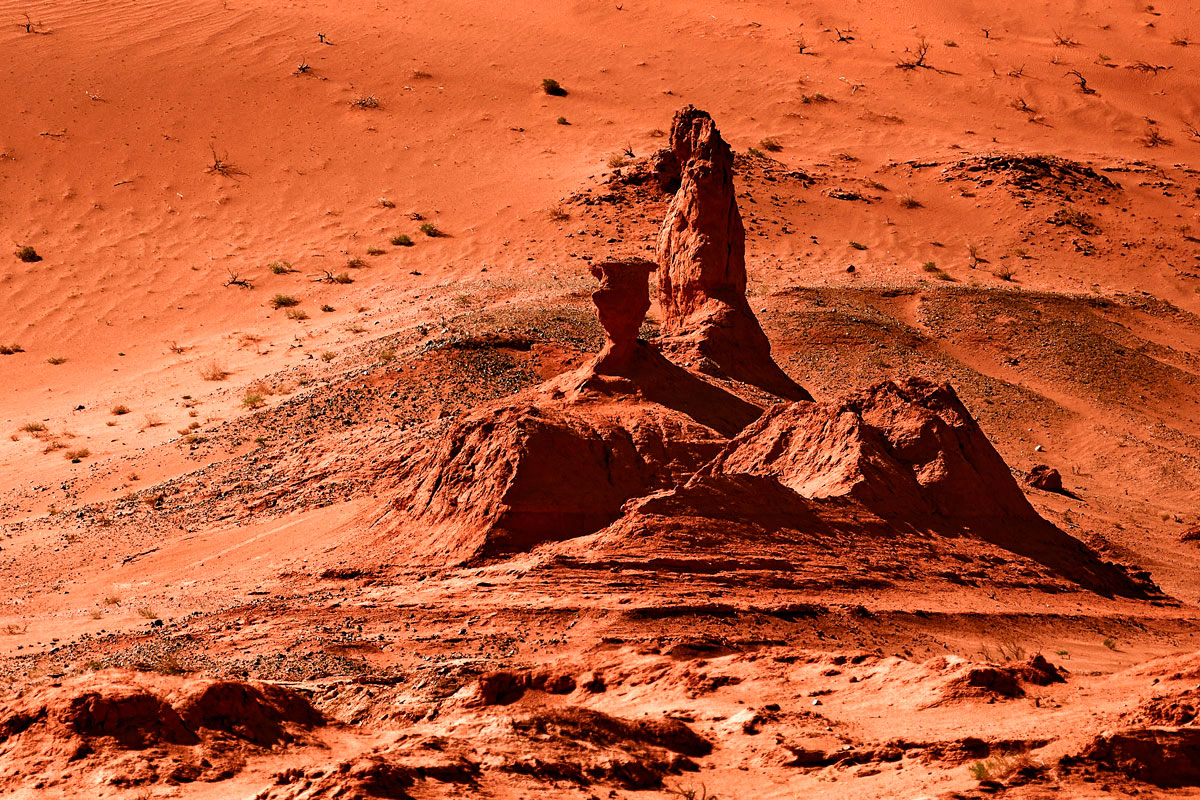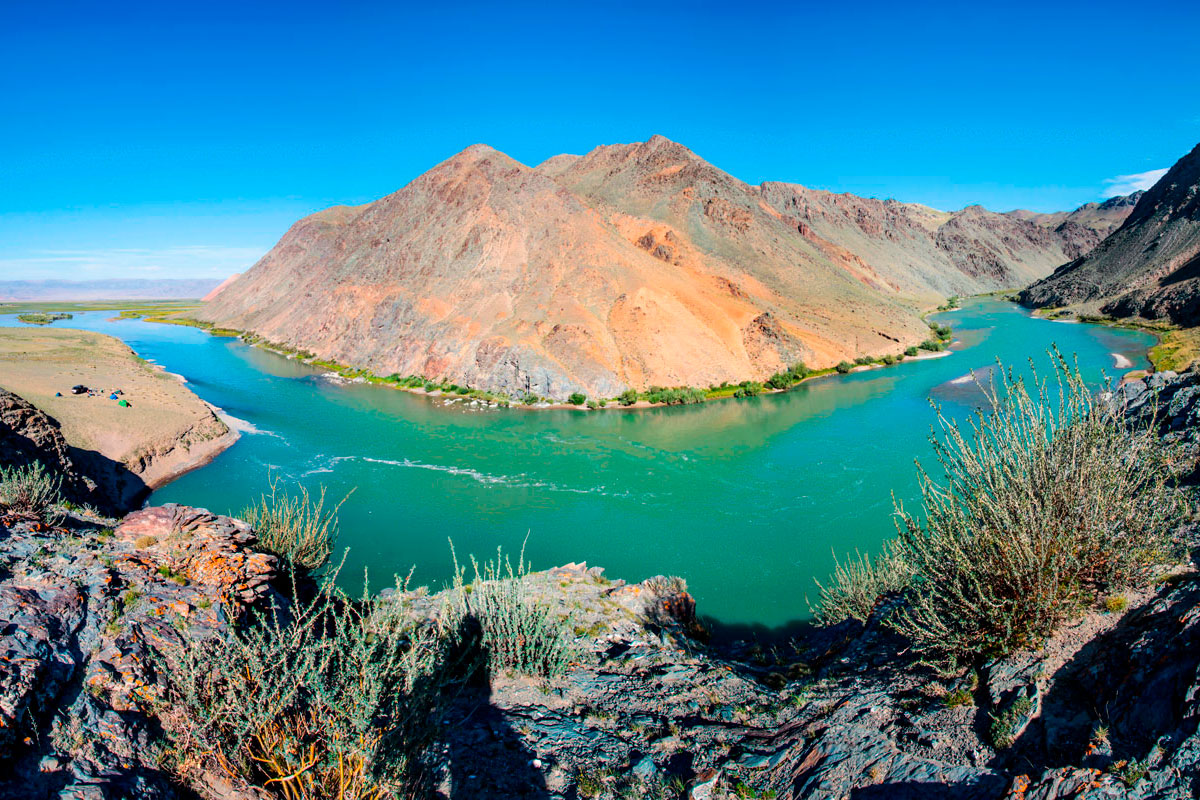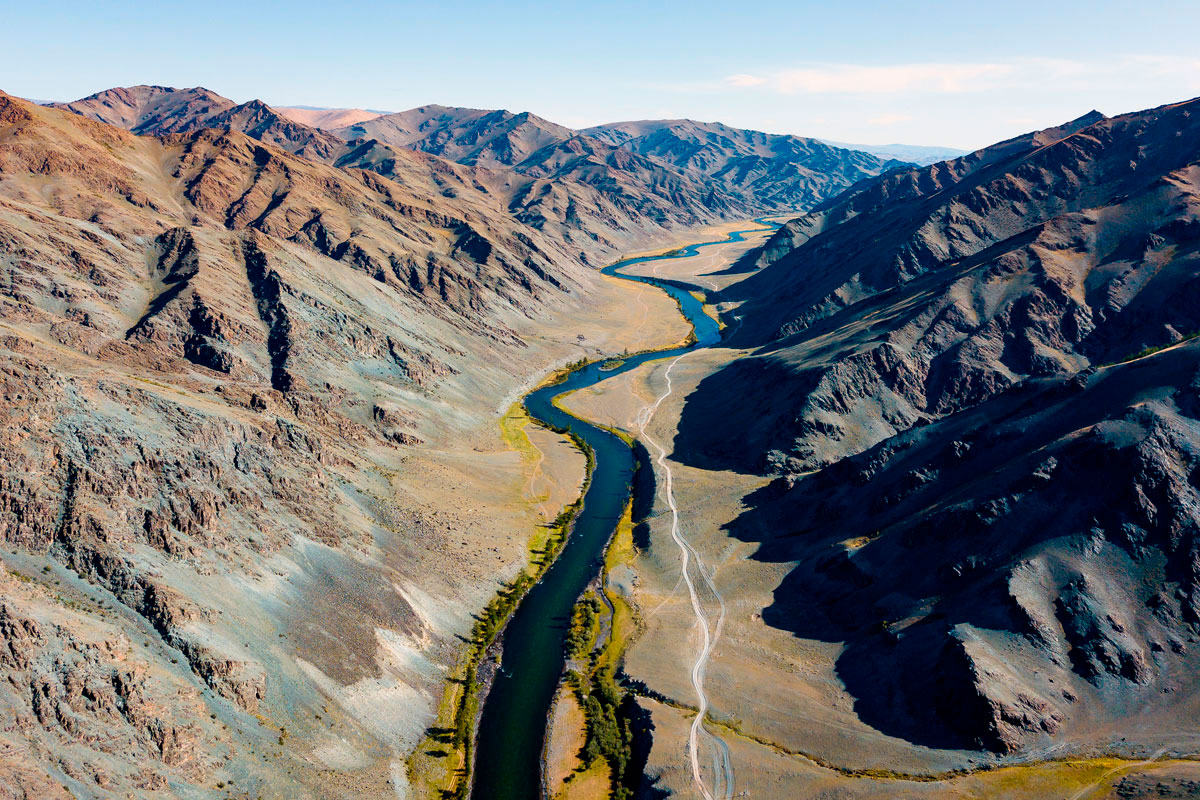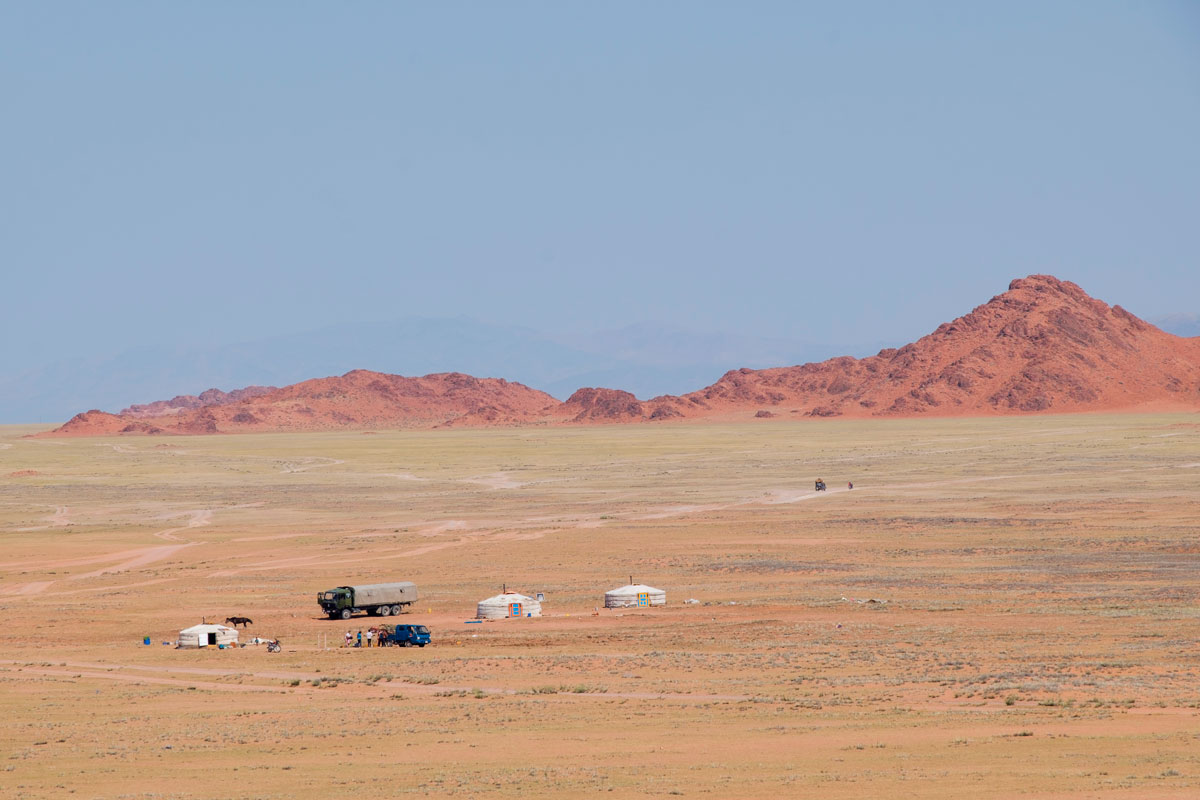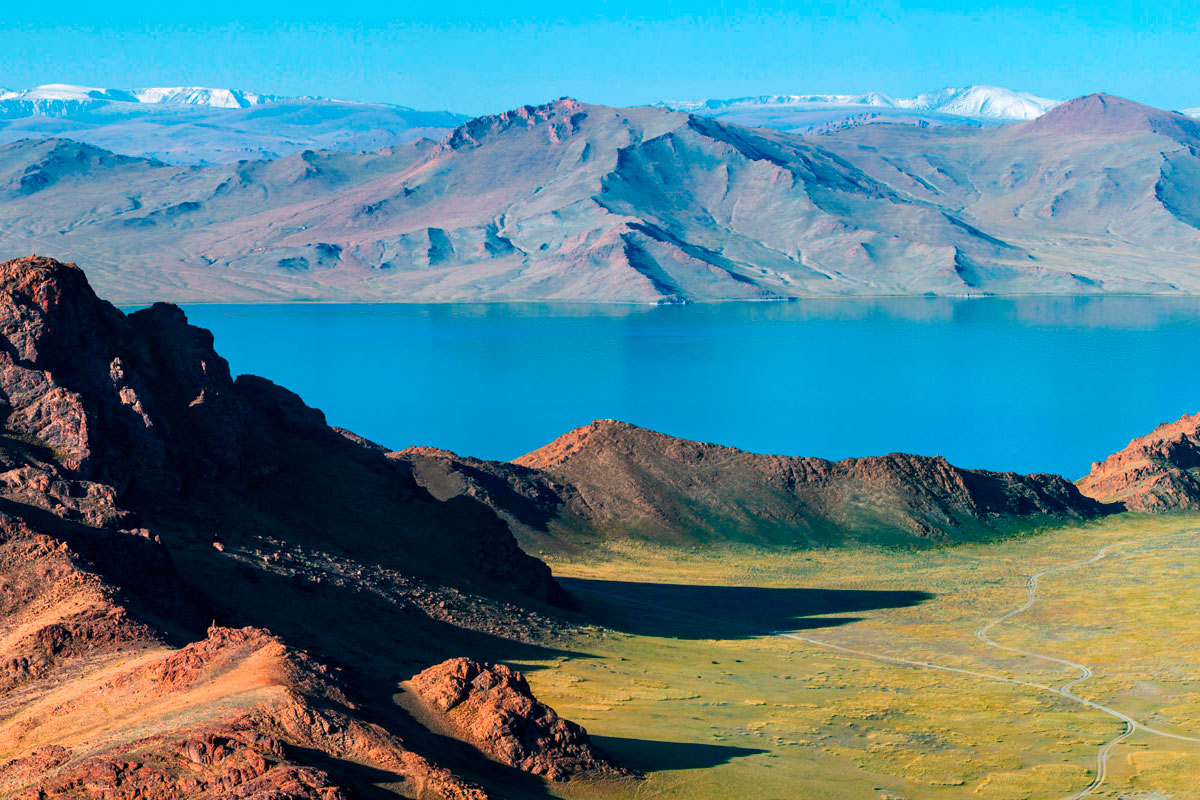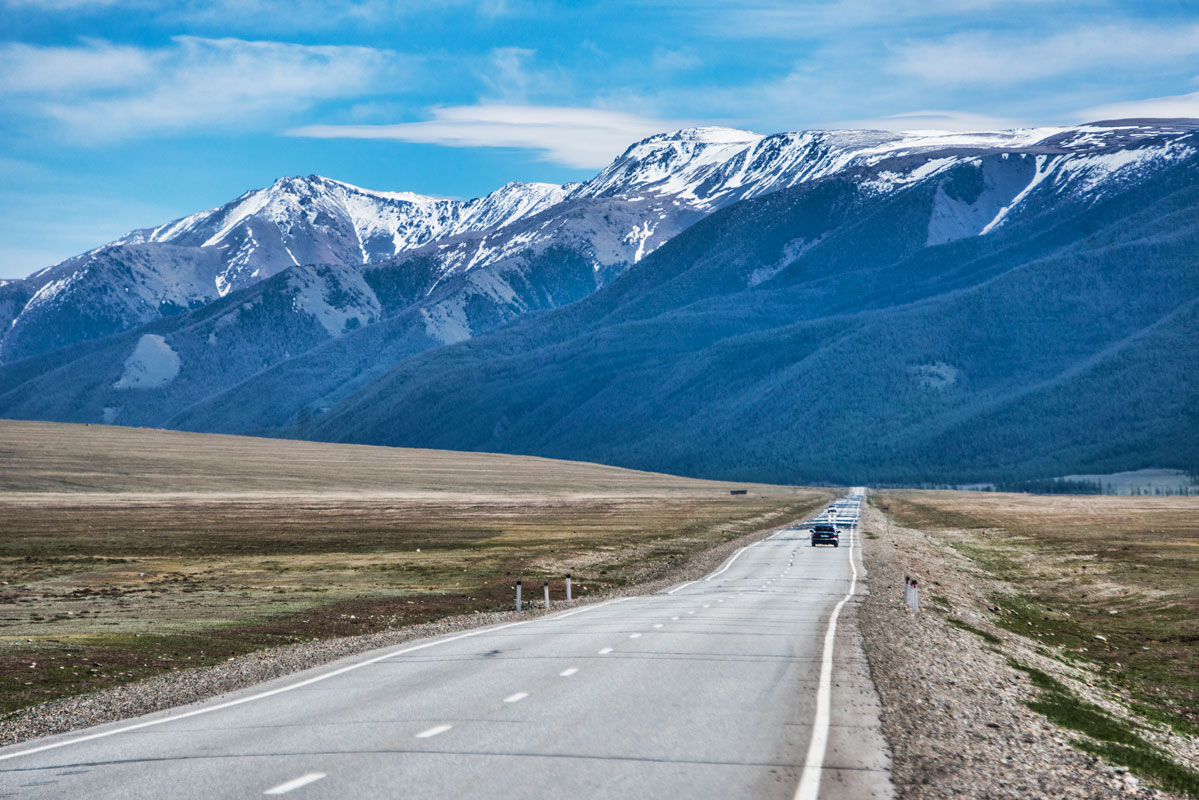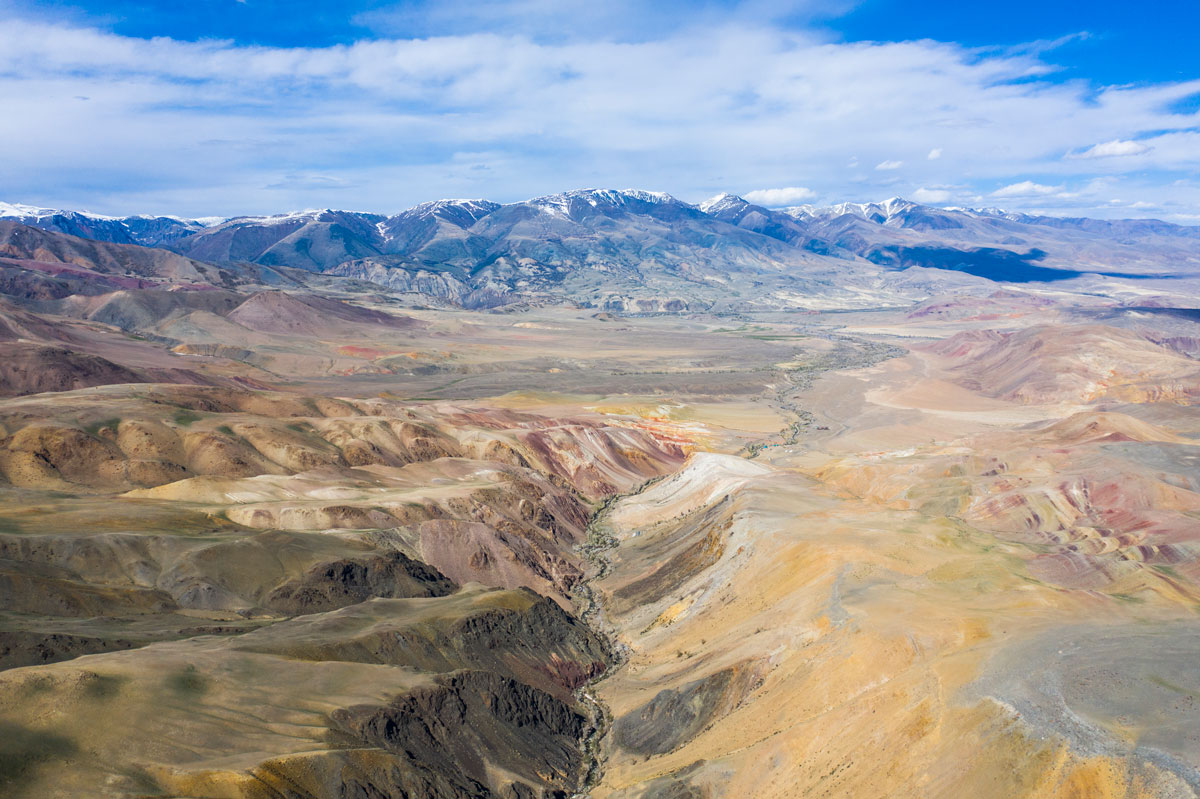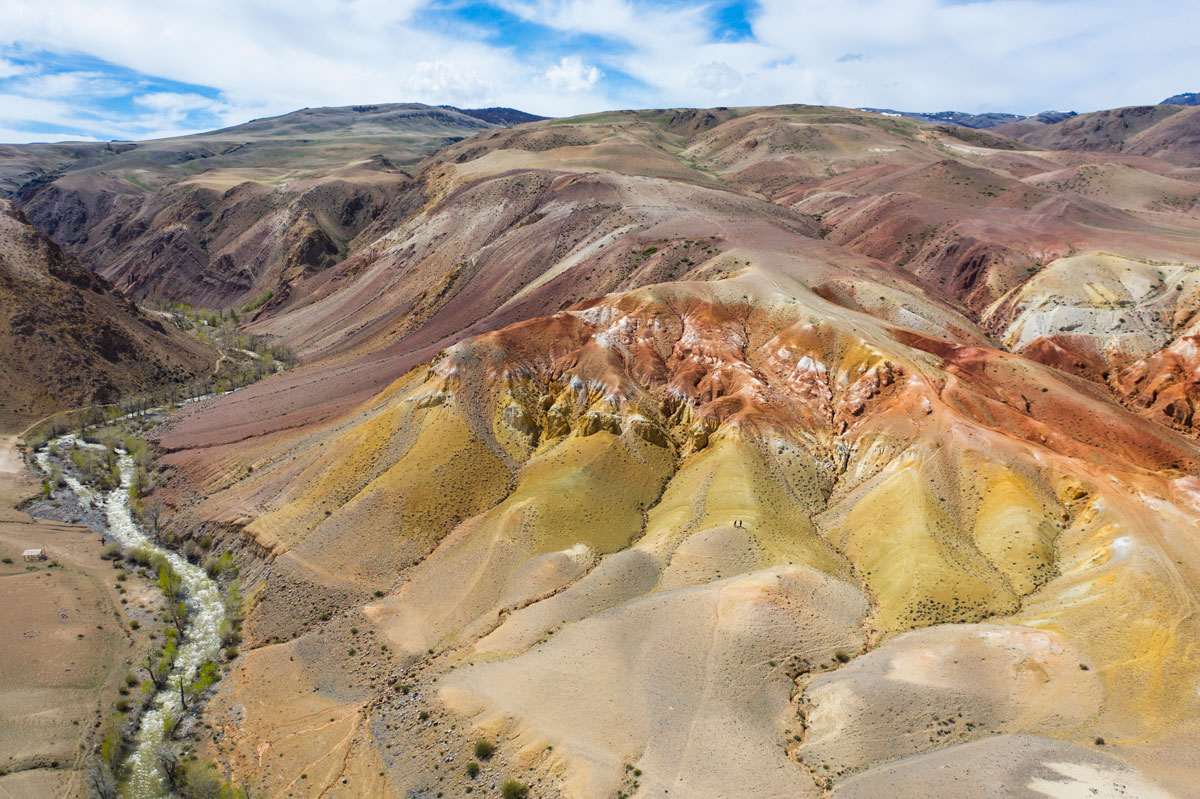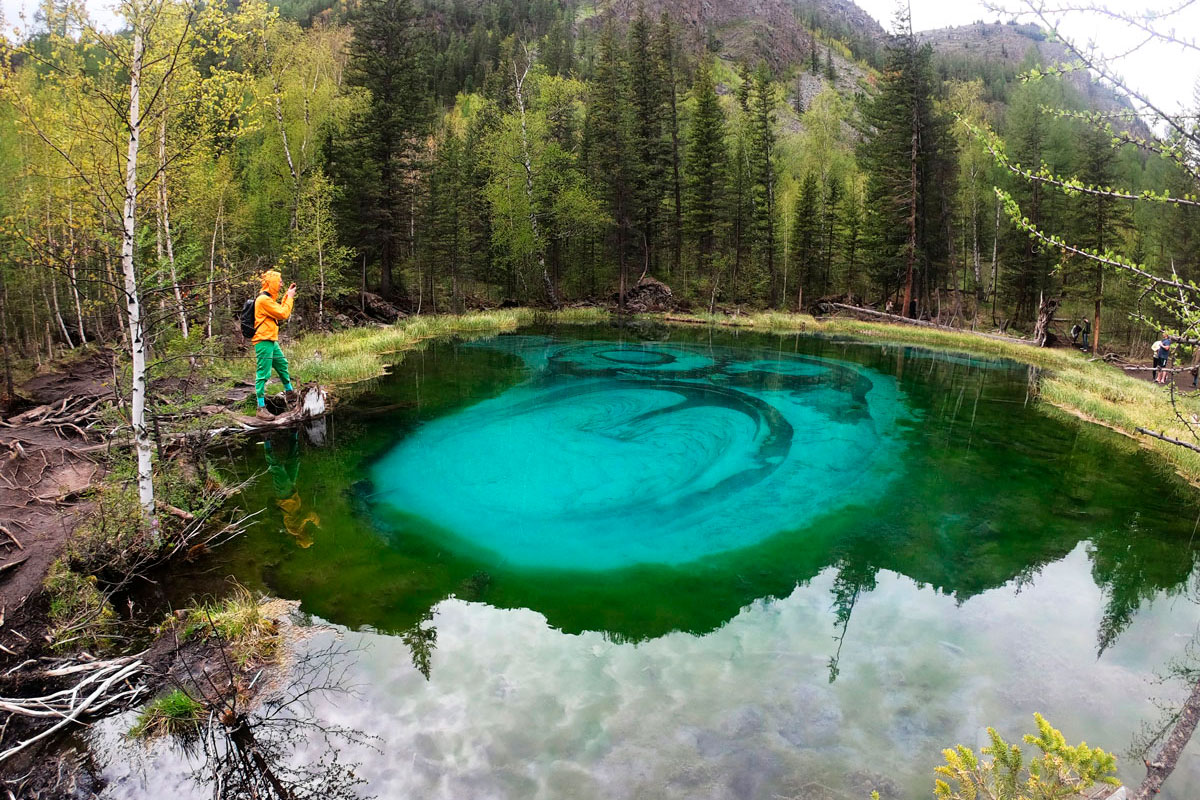Expedition auto tour to Mongolia
Tour Dates: May 12 - 27, 2025
The great Russian artist, thinker, writer, archaeologist and traveler Nikolai Konstantinovich Roerich compared Mongolia to an "unfinished cup" and called for treating it "carefully and kindly". The giant homeland of Genghis Khan, sandwiched between Russia and China, is considered a steppe country, but in fact, most of it is covered by mountains and the Gobi Desert.
Mongolia occupies three territories of France on the world map, and it is, of course, difficult to travel around it in one go. But we will try to do it! In any case, we will travel almost all of its central, southern and western parts. Only the eastern part of this huge country will remain undeveloped, we will leave this part for our future travels))
The tour is expeditionary in nature. This means that we have a plan, we have an understanding of where and what we want to see, there is organization and thoughtful logistics, but there is no guarantee that everything we have planned will work out. And it is impossible to guarantee anything in an area where there are almost no normal roads, tourist infrastructure, and many things (for example, car repairs and tire fitting) have to be done with your own hands and improvised means, and you have to spend the night in tents, because for hundreds of kilometers around there are no hotels or even campsites, but there are fantastically beautiful, in places simply unreal alien landscapes that cannot be seen in any other way.
The route along the way will most likely be adjusted based on the circumstances, but we guarantee that there will be a lot of interesting things in it, there will be a lot of impressions and adventures!
Tour organizer:
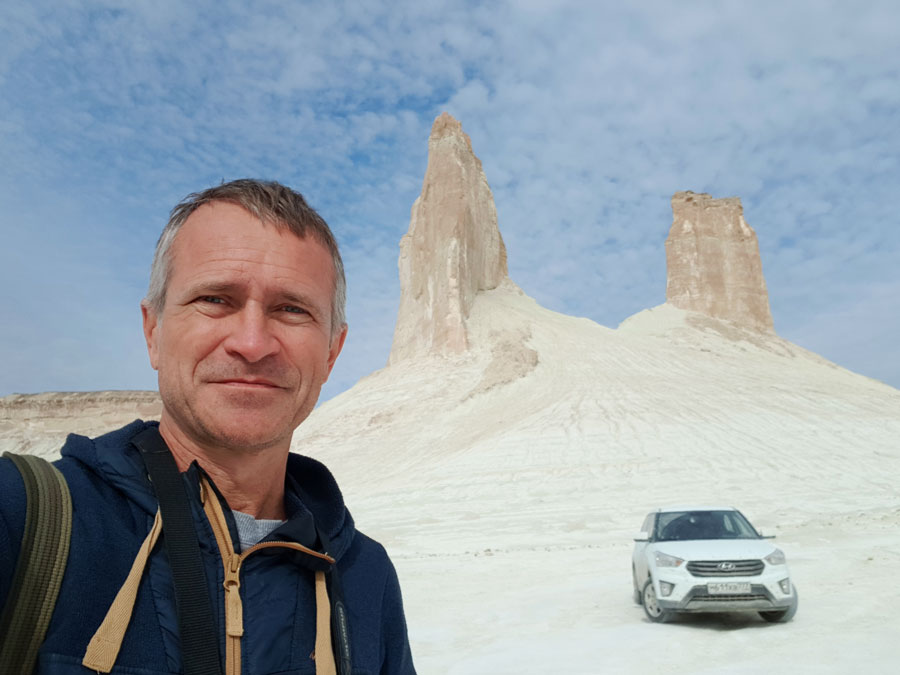
EVGENY ANDROSOV
Professional traveler, climber, mountain guide and tour instructor with years of experience. Has visited all continents, countries of the world and regions of Russia. Organizer of hundreds of author's tours, expeditions, hikes, ascents... Read more
Itinerary day by day:
We meet in the morning in Abakan city (to participate in the tour, you must fly to Abakan the day before or on a morning flight arriving before 10 am - the meeting point and exact meeting time will be determined 5-10 days before the start of the tour in the general chat), we load into the cars and set off on a journey. First, we will stop at a cafe in Abakan, where we will have breakfast, and then we will have a long road along the federal highway "Yenisei" through Khakassia and Tuva almost to the border with Mongolia.
Today we will travel about 700 km., and so that the road is not too tiring, we will make short stops in beautiful places - at the pass with a view of Ergaki, near the ethnographic village of Aldyn-Bulak with a view of the Yenisei, where we will have a lunch snack, and then we will stop at the ancient Buddhist temple Tsogchen Ustuu-Khuree. We spend the night in a tent camp on the bank of the small river Zam-Dyt.
Breakfast, pack up camp and head to the Mongolian border, which is about 20 km from our overnight stop. We cross the border and, after driving a little over 100 km along the highway, we stop in the first Mongolian city on our way - Ulaangom. Here you can exchange Russian rubles and other currencies for Mongolian tugriks, as well as have lunch in a cafe and visit several local Buddhist temples.
After leaving the city, we will drive about 130 km and make a couple of stops on the shore of the salt lake Khyargas-Nuur. The shore of Khyargas-Nuur is rocky, huge stone blocks of white rocks protrude from the water, some of them are up to 20 meters high. The surface of the rocks is heavily cut by wind and water erosion, almost all "strewn" with nests of cormorants, which fly to the lake in April, hatch chicks and fly away for the winter to the southern regions of China.
But the main highlight of the lake is the legend of the "Mongolian Loch Ness monster". From time to time, mysterious tracks appear on the shore of the lake, which presumably belong to a large prehistoric reptile. Not only ordinary people, but also scientists from scientific expeditions have recorded several groups of relatively fresh tracks stretching 1.5 kilometers from the water. In addition, the researchers also found bones that, according to them, cannot belong to any other animals of Mongolia, and on the fish caught from the lake - bite marks with traces of giant fangs. Myths about a huge "whale" living in the lake have long been known to local nomads living relatively close to the reservoir, so they do not go close to the lake and do not swim in it.
After the lake, we will drive another 200 - 300 km and stop for the night in a tent camp, which we will set up right in the steppe not far from the highway.
Today our task is to overcome about 400 km of not the easiest gravel road and reach Chuluutyn Khavtsal. This is the valley of the Chuluut River, which has cut a beautiful and large-scale canyon in the rock strata over thousands of years. Here we will pass several points from where beautiful views of the canyon open up, and in one of them we will set up a tent camp for our third overnight stay on the route.
Another long journey through the vast expanses of Mongolia and we will reach its capital, Ulaanbaatar, where we will stop for the night (finally!) in a comfortable hotel.
The inconveniences of the long journey will be compensated by stunning, quite diverse landscapes, replacing one another throughout the day.
After taking a shower and resting, we walk around the evening city, have dinner in a restaurant with local cuisine.
We will spend the first half of the day exploring Ulaanbaatar, and then head to the world's largest equestrian statue of Genghis Khan in Tsonjin Boldog, 50 km from the capital. The height of the statue is 40 meters (excluding the ten-meter pedestal). It is made of stainless steel weighing 250 tons and surrounded by 36 columns symbolizing the khans of the Mongol Empire from Genghis to Ligden Khan. The two-story pedestal houses an art gallery, a museum of the Xiongnu era, restaurants and a souvenir shop. There is an observation deck on the horse's head.
After exploring the monument and the area around it, we will drive another 36 km to enjoy the beauty of the northern, tourist part of the Gorkhi-Terelj National Park. This is one of the main attractions of Mongolia, which is not surprising - the nature in the park is special, it differs from the typical landscapes of the country. There are a large number of outlier rocks, weathered to bizarre shapes, one of the most famous rocks is called "Turtle Rock" and is the calling card of the park.
Another attraction of the park is the Buddhist temple Aryabal. It is located in the rocks and 100 white steps plus 8 black ones lead to it. Having climbed up, you find yourself in a space where you can sit in silence and silence for as long as you wish. A wonderful place and a wonderful opportunity to be alone with yourself.
After exploring the park, we return to our hotel in Ulaanbaatar.
Immediately after breakfast, we leave the capital of Mongolia, our stronghold of civilization and comfort on the route, and head to the south of the country - towards the Gobi Desert. Today our goal is Tsagaan Suvarga, five hundred kilometers from Ulaanbaatar. This is a multi-colored rock, the name of which in Russian means "White Sanctuary". The landscape really resembles the ruins of an ancient temple or an abandoned city with pink, red, yellow, green and purple shades. Once this area was the bottom of an ancient sea, consisting of mineral deposits, remains of multi-colored shells and limestone clay.
Right in the middle of this multi-colored landscape, we will spend the night in a tent camp, but you won't be able to sleep here for long - the sunset and sunrise will force even the laziest to stay awake and take thousands of photos.
All day we will be driving through the area, which is part of the Gobi Desert. Our roads are very bad, rather they are directions than roads, but the landscapes today and tomorrow will be breathtaking!
The final point of the journey for today and the most beautiful place of the day should be the Bayanzag rocks or, as they are also called, the Flaming Rocks. Translated from Mongolian, "Bayanzag" means "rich in saxaul", this name is associated with the thorns growing here - a favorite delicacy of camels. But for the red-orange color of the sand, this place is more often called the Flaming Rocks.
People lived here in ancient times. This is evidenced by the finds of stone tools of the Upper Stone Age. But first of all, Bayanzag is famous for the fact that numerous dinosaur fossils were found here. We are unlikely to find anything valuable ourselves, but local souvenir sellers have a wide range of Gobi Desert minerals and fossilized bone fragments. However, it should be remembered that exporting dinosaur fossils outside of Mongolia is strictly prohibited and can result in a huge fine.
After breakfast and packing up our tent camp, we set off on a journey through the Gobi Desert.
First we will stop in the town of Bulgan, where we will need to fill up the cars, have a snack in a cafe and buy local souvenirs, and then we will go to an area called Khongoryn Els, which means "singing sands". Here are the highest dunes in Mongolia - from 3 to 15 kilometers wide and 100 - 300 meters high! This is the territory of a national park, which is adjacent to the Great Gobi Reserve, the territory is fenced and entry is paid.
We will make a difficult climb to the highest dunes to take thousands of stunning photos and hear the "singing of the sands" (yes, this is not a metaphor or a figure of speech) - the sands really "sing", although this singing is more like the beat of drums or the roar of a racing car. But, in any case, this is a real show of nature and it would be strange and sad to miss it. We will spend the night, if possible, in a local campsite (if there are places for our group), or we will set up a tent camp as usual.
Today we have to travel only 240 km to the city of Gurvantes, but the road is too bad, so we can't count on more. We spend the night in a hotel, wash off the sweat and dust of the desert.
170 kilometers of a road no less bad than yesterday and we will reach the area of Khermen-Tsav, which is often called the "Red Canyon". The length of the canyon is about 20 kilometers, the depth is 200 meters. Among the hot red sand, a green spot of living vegetation with centuries-old poplars stands out in contrast - an extremely rare phenomenon in the waterless regions of the Trans-Altai Gobi. An amazingly beautiful place with impressive red sand cliffs along the perimeter and a green oasis in the center, due to its inaccessibility, is rarely visited even by the Mongols, but this makes this place even more interesting for us!
At dawn or in the rays of the setting sun, steep sandstone cliffs of very bizarre shapes create the impression that you are somewhere on Mars. There are huge boulders that look like a monkey's head, a large mushroom, some of the remnants have their own names - Castle, Indian, Bird, Egg Hill. In the southern part of Khermen-tsav there is a remnant of a special shape, reminiscent of the Egyptian sphinx. Its height is 23 meters, the Egyptian - 20 meters, both look to the east. This is where we will set up our tent camp!
Today we leave the Gobi Desert and set off on the return journey - towards the border with Russia, but there is still a lot of interesting things ahead!
Since we will have to drive to the highway almost completely off-road, and the highway is a gravel road of poor quality, it is difficult to even approximately calculate the speed and distance that we will be able to cover in a day. Therefore, we plan three days for the journey to the nearest large city of Khovd, where we can stay in a hotel, wash off the accumulated dirt, and wash our clothes. We will spend the night in tent camps in those places where we can get to on each of these days. Three days of a difficult road, dust, uncertainty, flat tires and beautiful, varied landscapes!
On this day, according to the plan, we should wake up in a hotel in the city of Khovd. Just a minute, this is the oldest city in Mongolia! It was founded back in 1685 by Galdan Boshogt Khan. For a long time, the city was the only large settlement on the route of pack caravans from Altai to China. Today, about 30 thousand people live here, in a town at the foot of the Mongolian Altai, but in addition to people, yaks, camels, and even roe deer and argali roam the city.
The road after the city of Khovd will be better than before, but not much, so get ready to continue driving slowly. It is warming that there are only about 400 km left to the border with Russia, and there the Chuysky tract awaits us - asphalt, which will seem like a high-speed highway after the exhausting Mongolian gravel roads.
But that will be tomorrow. Today we will visit Lake Tolbo-nuur, squeezed between mountain peaks. This is the center of ecotourism and fishing in western Mongolia. The lake is filled with water from glaciers, which is quite cold all year round, so swimming here is rare. From here you can see two "four-thousanders": Sairyn-Uul (3981 m) and Tsengel-Khairkhan (3943 m). Around the lake there are only mountain cliffs and not a single plant, but there are many birds and small animals. Well, and then we will continue on our way and spend the night in a lagar not far from the border. It is even possible that we will have time to cross it and then set up a tent camp on Russian territory, but the likelihood of this is low due to the bad roads and low speed of movement.
We cross the border with Russia and find ourselves (finally!) on asphalt. The rest of the way to Barnaul will be a breeze, although we still have 770 kilometers to go.
However, there is something to see along the way. A little less than 100 kilometers away, we will turn off the highway and stop to see the Altai Mars - mountains almost devoid of vegetation, painted, thanks to the characteristics of the local rocks, in bright red, yellow and green colors - a spectacular natural landmark. Here we will walk a little, fortunately, taking a break from sitting in a car is not only useful, but also pleasant.
And literally 70 kilometers away we will make another stop - near the no less spectacular Geyser Lake.
We will stay overnight at a hotel in the city of Biysk.
Early departure from the hotel, 170 km. of travel and we will arrive at the Barnaul airport so that the participants can fly home on flights that depart at lunch, in the afternoon or in the evening. Those who wish can stay in Barnaul, pay for their own accommodation and fly home the next day.
The tour price includes:
- 4x4 travel all days of the tour,
- hotel accommodation (4-5 nights), camping accommodation (1-2 nights),
- Accommodation in tents all other days of the tour,
- Three meals a day - hot breakfasts and dinners, as well as snacks (dry rations) for lunch on days when there are no canteens or cafes on our way,
- General camping equipment (tents, burners, gas, drinking and technical water, utensils for cooking food, camping equipment), as well as a first aid kit, satellite communication for emergency calls,
- registration of permits to national parks, entry tickets to nature reserves,
- 24/7 tour organizer service,
- drivers' work,
- group and individual photographs of each participant, taken during the entire trip with professional photography equipment and provided electronically.
The tour price does NOT include:
- air or train tickets to Abakan and from Barnaul,
- meals in cafes and restaurants,
- entrance tickets to museums and other tourist attractions,
- visa, consular and customs fees,
- medical insurance,
- expenses of participants related to force majeure circumstances - being late for a flight, due to machine breakdowns, etc.,
- clothing and personal equipment of participants,
- souvenirs and other personal expenses of participants,
- other expenses not listed in the "included in the price" section
In terms of physical exertion, this is NOT a difficult tour! The difficulties of the tour are related to the morale of the participants: long journeys on bad, dusty roads, sometimes - on complete impassability, lack of usual comfort, bad weather, change of time zones, contact with insects (including poisonous ones), lack of usual daily routine and nutrition, waiting and uncertainty due to frequent tire fitting due to punctured wheels, possible car breakdowns, their towing and repair, possible route adjustments.
Before signing up for this tour, you should soberly assess your capabilities and habits - the tour is an expedition and does not imply comfort, but it does imply many road adventures (tire fitting, car repairs, route changes due to circumstances, the possibility of serious delays on the way and being late for the plane home), not always pleasant for most people. If you are used to comfort and everything going according to plan, this tour is CONTRAINDICATED for you!
We are going in a rather warm and pleasant time in all respects, mid-late spring, when nature blossoms with all its colors and gives many warm days, but there is no sweltering heat yet. But since we will be walking quite a lot, and also living in tents, it is worth taking seriously the selection of clothes, shoes and equipment - the weather can present many surprises and it is better to be prepared for them.
For this tour, you need to take the following set of clothes with you: membrane jacket + light down jacket (in the evenings, especially in the desert, it can be very cool), waterproof hiking pants, good trekking boots or sneakers, thermal underwear, as well as a hat, gloves, warm socks, fleece. In addition, you will definitely need a small backpack of 20-30 liters for radial exits and walks, a tourist mat and a sleeping bag, a headlamp, rubber slippers, sunglasses and sunscreen, a baseball cap or a panama hat with brims, a scarf or buff, a thermal bottle for water, 2-3 packs of wet wipes. Clothes for daytime exits, as well as car travel, should be light, but preferably closed, especially in the leg area, since there are snakes, scorpions and poisonous spiders in Mongolia, and the sun can be very active during the day.
It is strongly recommended to take antihistamines with you, which you usually use in case of bites of poisonous insects.
A full list will be provided to you by the tour organizer after receiving your application for the tour and making an advance payment.
1. Unfortunately, we are unable to provide visa support for either Mongolia or Russia. Therefore, we accept only foreign citizens who do not need visas to Mongolia and Russia, or who are ready to obtain these visas on their own.
2. No vaccinations are required to enter Mongolia.
3. Medical insurance for those traveling abroad is mandatory.
1. If you are interested in this tour, leave a request using the form below or call the numbers listed, we will contact you and answer all your questions.
2. To reserve a place, you must make an advance payment of 30% of the tour cost. The advance payment is refundable 45 days or more before the start of the tour and non-refundable, unfortunately, less than 45 days before the start of the tour, if the refund is due to your refusal to participate (for any reason). If the tour does not take place due to our fault, a group not being formed, tickets not being purchased, or force majeure, your prepayment will be guaranteed to be returned to you in any case.
3. The final payment is made within seven to three working days before the start of the tour.
© The program description uses photographs by Evgeny Androsov, as well as licensed stock photos from Shutterstock.
